The 1960s was a transformative decade for the air conditioning industry, marking a pivotal moment in how air conditioning impacted daily life. While air conditioners had existed in some form for decades, the 1960s brought widespread accessibility, leading to dramatic changes in living conditions, societal development, and the urban landscape. This era witnessed significant innovations in air conditioning technology that made it more efficient, affordable, and available for the average homeowner, reshaping the way people experienced comfort in both private and public spaces. We gonna explore all about 1960s Air Conditioner Revolution.
In the earlier part of the 20th century, air conditioning was primarily reserved for commercial and industrial applications, such as in movie theaters and large office buildings. However, the 1960s ushered in an era where personal comfort was no longer a luxury limited to the elite. For many Americans, air conditioning became a symbol of modernity, and by the end of the decade, it had become a standard feature in many homes, particularly in warmer climates.
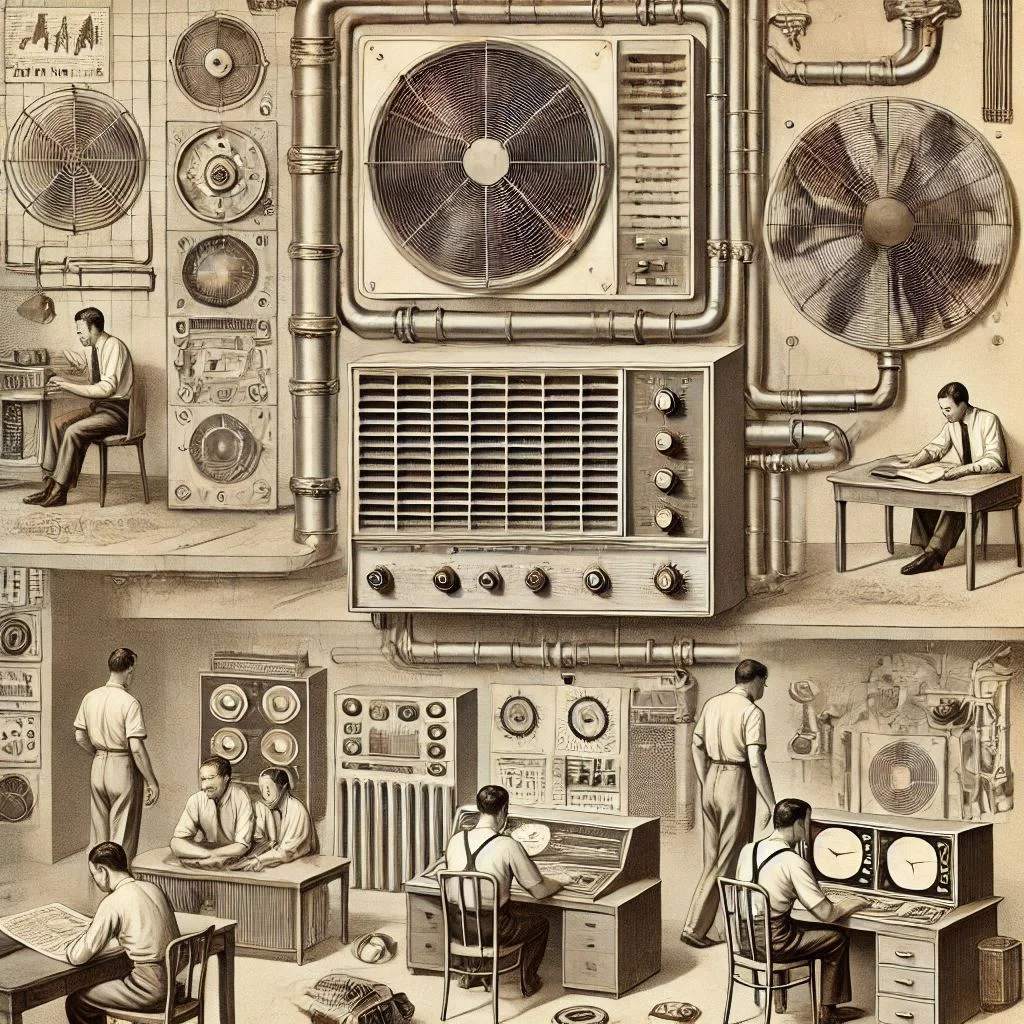
The introduction of mass-produced air conditioners and improvements in refrigerant technology played a crucial role in this shift. Brands like Carrier and Trane revolutionized the industry with affordable, compact units that could easily be installed in residential homes. The cooling effect of air conditioning was no longer a rare luxury but an expected feature in many newly constructed buildings, providing relief from the intense heat of summer months.
In addition to providing comfort, air conditioners in the 1960s helped improve the overall quality of life. People no longer had to suffer through sweltering heat, which could lead to dehydration, heat strokes, and discomfort. Air conditioning became an essential tool for maintaining health, particularly in areas prone to extreme heat, such as Southern states in the U.S.
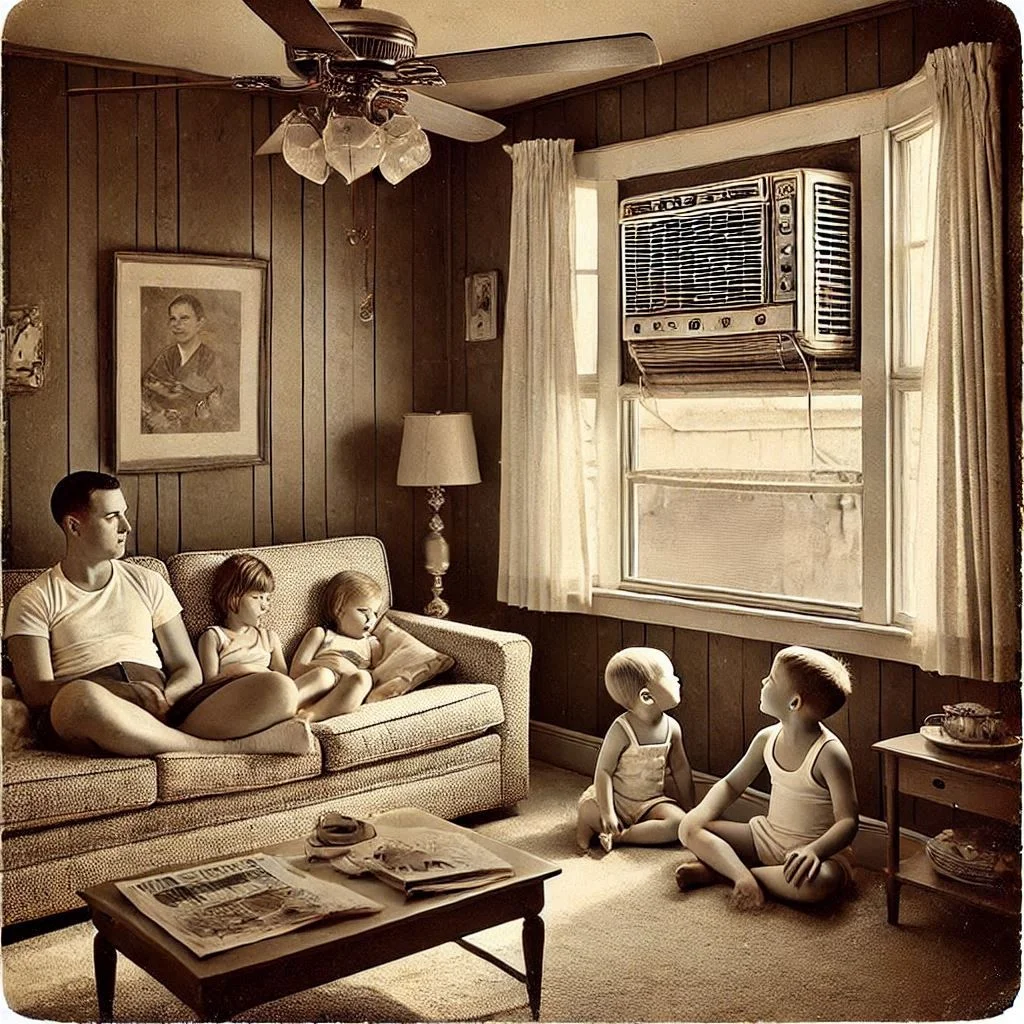
As the 1960s progressed, air conditioning became more than just a means of cooling the air. It started to signify progress, innovation, and the rapid modernization of the country. With the expansion of air-conditioned homes and commercial buildings, people were able to work and relax in more comfortable environments, boosting productivity and altering daily routines. The mass adoption of air conditioning in the 1960s played a significant role in transforming cities, making them more livable and contributing to the rapid growth of suburban areas.
The impact of air conditioning during this time extended beyond individual comfort—it had profound effects on the architecture of buildings, the design of cities, and even on economic patterns. For instance, air-conditioned homes became increasingly desirable, leading to a boom in the housing market. Commercial and industrial spaces also adapted their designs to accommodate air conditioning, which in turn led to more efficient and productive workspaces.
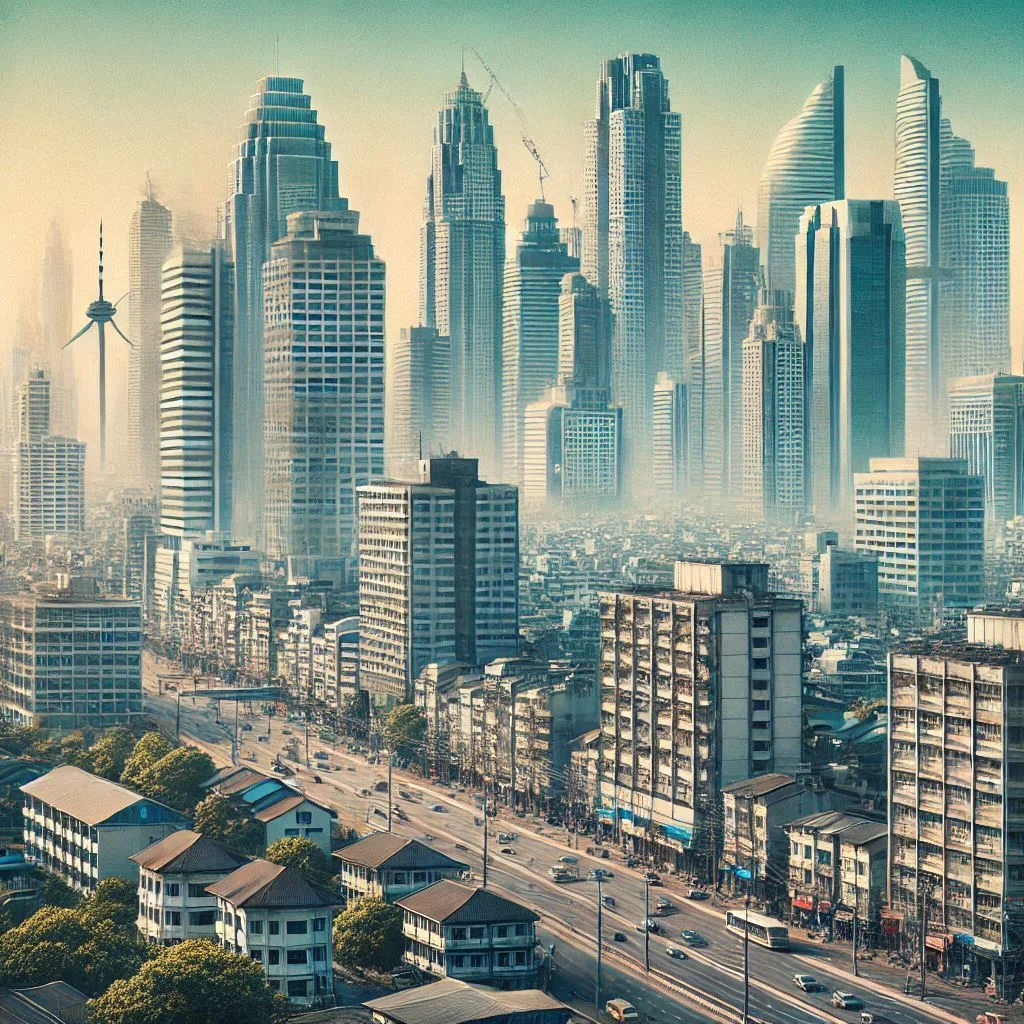
In conclusion, the 1960s was a defining decade in the history of air conditioning. The technological advancements, increased accessibility, and societal embrace of air conditioners marked the beginning of a new era, one in which climate control was no longer reserved for the few but was a cornerstone of everyday life for the many. Air conditioning changed the way we lived, worked, and interacted with our environment, laying the foundation for the future of cooling technology.
The Rise of Air Conditioning in Public and Private Spaces
The 1960s marked a monumental shift in the widespread use of air conditioning, particularly in public buildings and private homes. Before this decade, air conditioning was primarily found in commercial spaces and larger institutions, offering comfort and productivity advantages. However, by the 1960s, this technology had become increasingly accessible to the general public, transforming the way people lived, worked, and interacted with their surroundings. The adoption of air conditioning in both public and private spaces was a defining feature of the 1960s, making it a key factor in shaping modern society.
Air Conditioning in Public Buildings
Public buildings, such as office complexes, movie theaters, and government facilities, were the first places to see the widespread adoption of air conditioning. The technology provided not only relief from the heat but also improved the overall environment, making these spaces more conducive to work and leisure activities. Large commercial buildings, with their vast floor plans, often had to rely on advanced cooling systems to ensure comfort for occupants throughout the day.
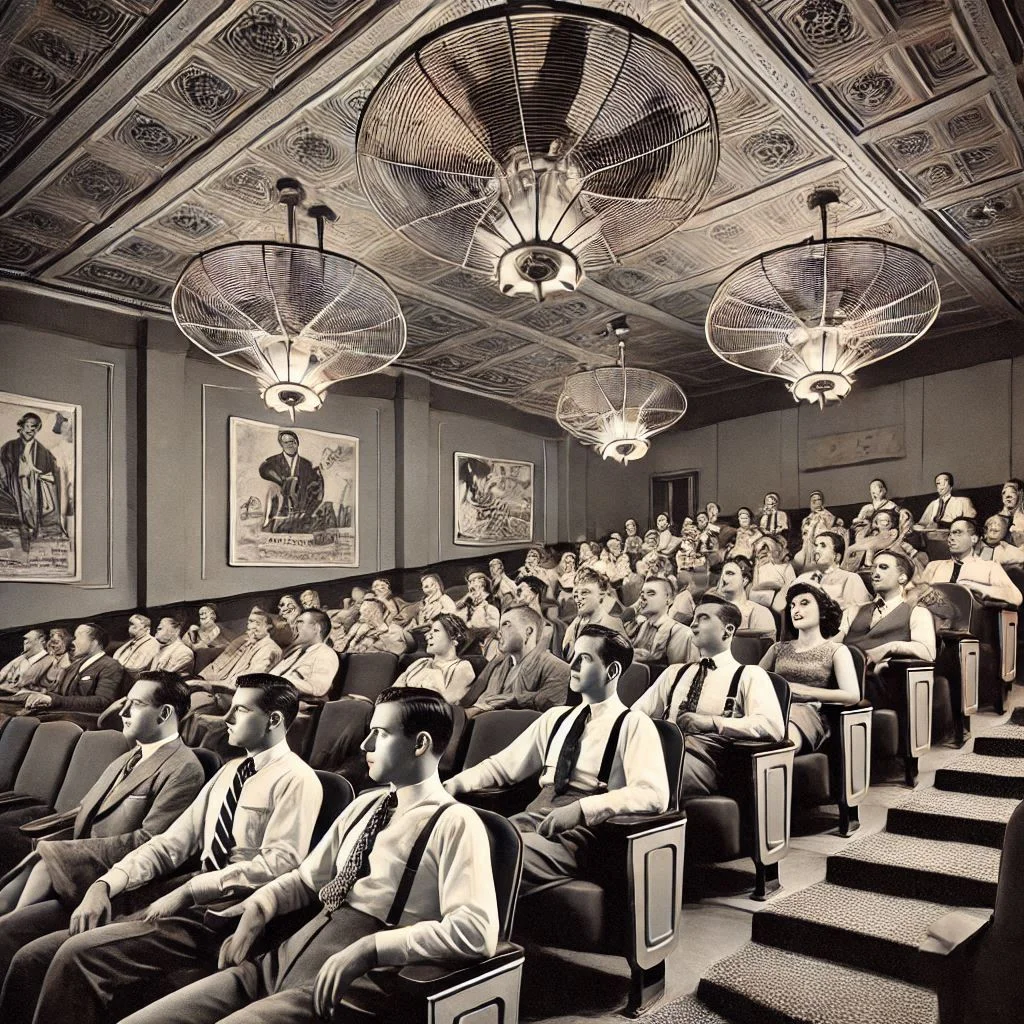
The influence of air conditioning on the design of public buildings was far-reaching. It allowed architects to design larger glass-windowed structures without the concern of stifling heat in the interiors. Air conditioning made these spaces more versatile and improved the experience for workers and visitors alike. For instance, shopping malls and office buildings became popular destinations, drawing more people into these air-conditioned havens where they could spend extended periods of time without the discomfort of extreme heat.
In government buildings, air conditioning improved conditions for public servants and helped maintain a stable environment for important documents and equipment. This modernization led to increased productivity and enhanced efficiency in administrative processes. The air-conditioned spaces of the 1960s played a vital role in the economic and cultural changes of the era, facilitating everything from business operations to social gatherings.
Air Conditioning in Private Homes
The 1960s also marked the era when air conditioning moved from being a luxury item for the wealthy to a standard feature in many middle-class American homes. As air conditioners became more affordable and technologically advanced, families in warmer climates began installing window units to combat the intense summer heat. By the late 1960s, central air conditioning systems started to gain popularity, allowing homeowners to cool their entire homes with a single unit.
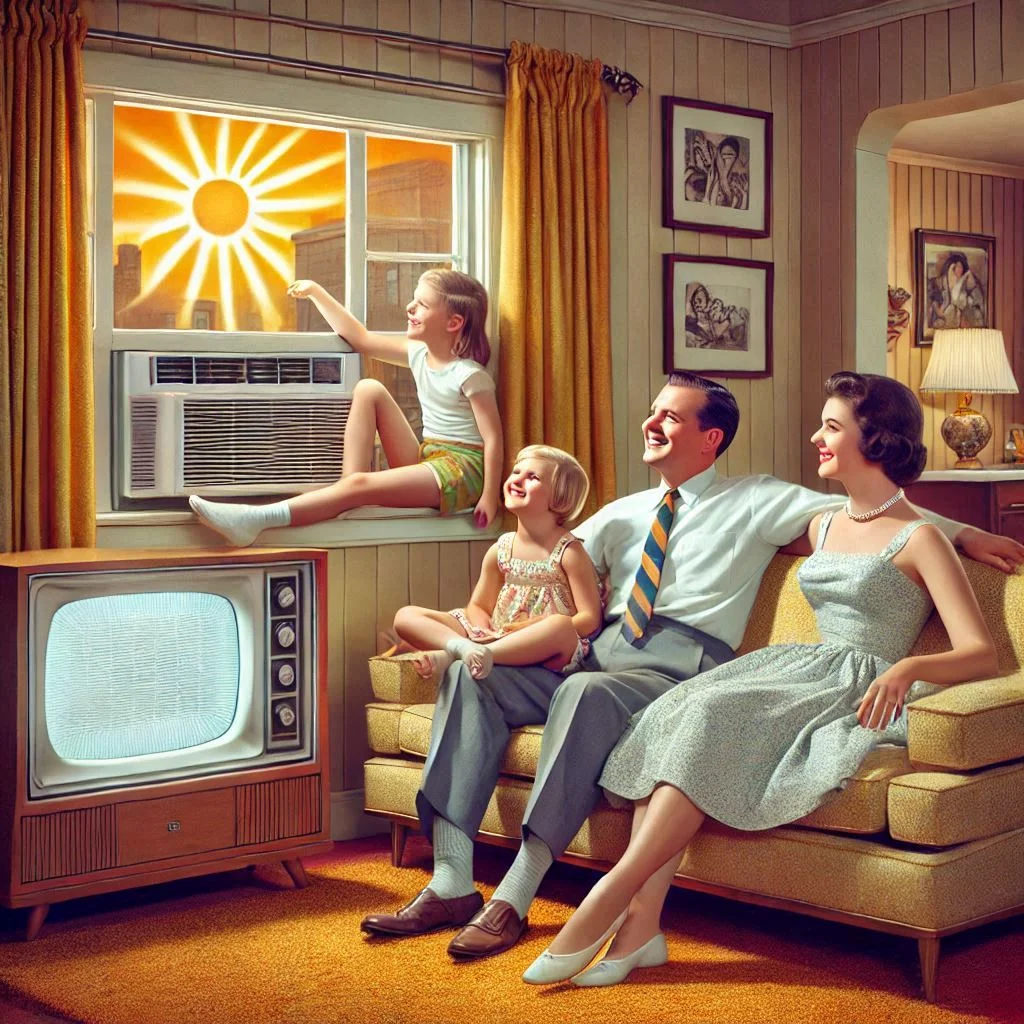
For many homeowners, air conditioning became a necessity, not just for comfort but also for health. Before air conditioning, homes would become unbearably hot during the summer months, making it difficult to sleep, eat, or relax. The installation of air conditioners in homes led to a significant improvement in quality of life, especially for families in regions prone to extreme temperatures, such as the Southern United States.
The 1960s also saw the rise of air conditioning as a symbol of modern living. Families who could afford air conditioning viewed it as a status symbol that indicated their ability to embrace new technologies. The air conditioner quickly became a must-have appliance in many American homes, enhancing comfort and setting the tone for future household expectations.
Impact on Urbanization and Suburban Growth
Air conditioning played a pivotal role in the growth and development of suburban areas during the 1960s. With homes equipped with air conditioning, families began moving to suburban neighborhoods where land was more affordable and space was more plentiful. The ability to live comfortably in suburban environments, where temperatures could be stifling in the summer, helped fuel the post-WWII suburban boom.
As cities grew, the demand for air-conditioned public spaces and homes skyrocketed. Urban areas that were once considered uninhabitable during the summer months became more attractive and livable. Air conditioning not only made these spaces more comfortable but also more productive, supporting the booming economy of the 1960s.
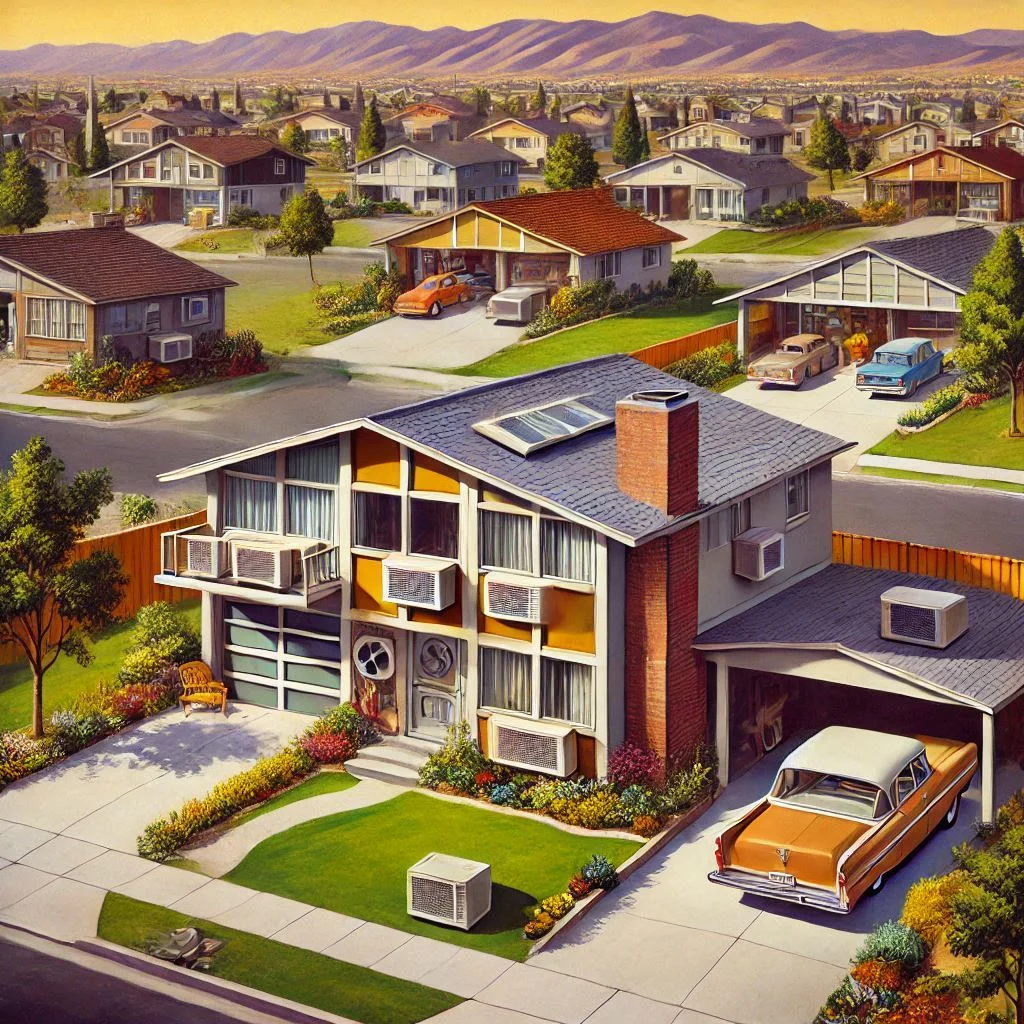
Cultural and Economic Impact
Air conditioning’s rise in both public and private spaces had a profound effect on culture and the economy. It contributed to changes in the way people worked, shopped, and socialized. Businesses began to operate more efficiently, and cities became more vibrant as people spent more time outdoors, enjoying air-conditioned environments. The technology’s influence can still be seen today, as air conditioning remains integral to daily life in homes, offices, and public spaces around the world.
The Revolutionary Invention of the Modern Air Conditioner
The invention of the modern air conditioner was not the result of a single breakthrough but rather a series of pioneering steps over many decades. Early attempts at cooling were rudimentary, often relying on natural methods such as ventilation or evaporative cooling. However, as technology advanced, so did the methods of achieving consistent, artificial cooling. The result of this progression was the modern air conditioner we know today—an essential appliance that revolutionized comfort in homes, offices, and public spaces, particularly in the 1960s.
Early Attempts at Cooling: Pre-20th Century
Before the advent of the air conditioner, people relied on primitive methods to cool their living spaces. In ancient times, the Egyptians used passive cooling techniques such as placing wet mats in doorways to encourage evaporation, which would cool the air. The Greeks and Romans employed similar methods, using shaded courtyards and running water to maintain a cooler environment.
In the 19th century, the industrial revolution brought about advances in technology, allowing for more mechanical means of cooling. One of the earliest forms of mechanical cooling was the use of ice. Large blocks of ice were used to cool the air in buildings, but this was impractical for widespread use. Refrigeration, which emerged in the late 1800s, became the first significant step towards modern air conditioning. Still, it wasn’t until the early 20th century that the technology we recognize today as air conditioning began to take shape.
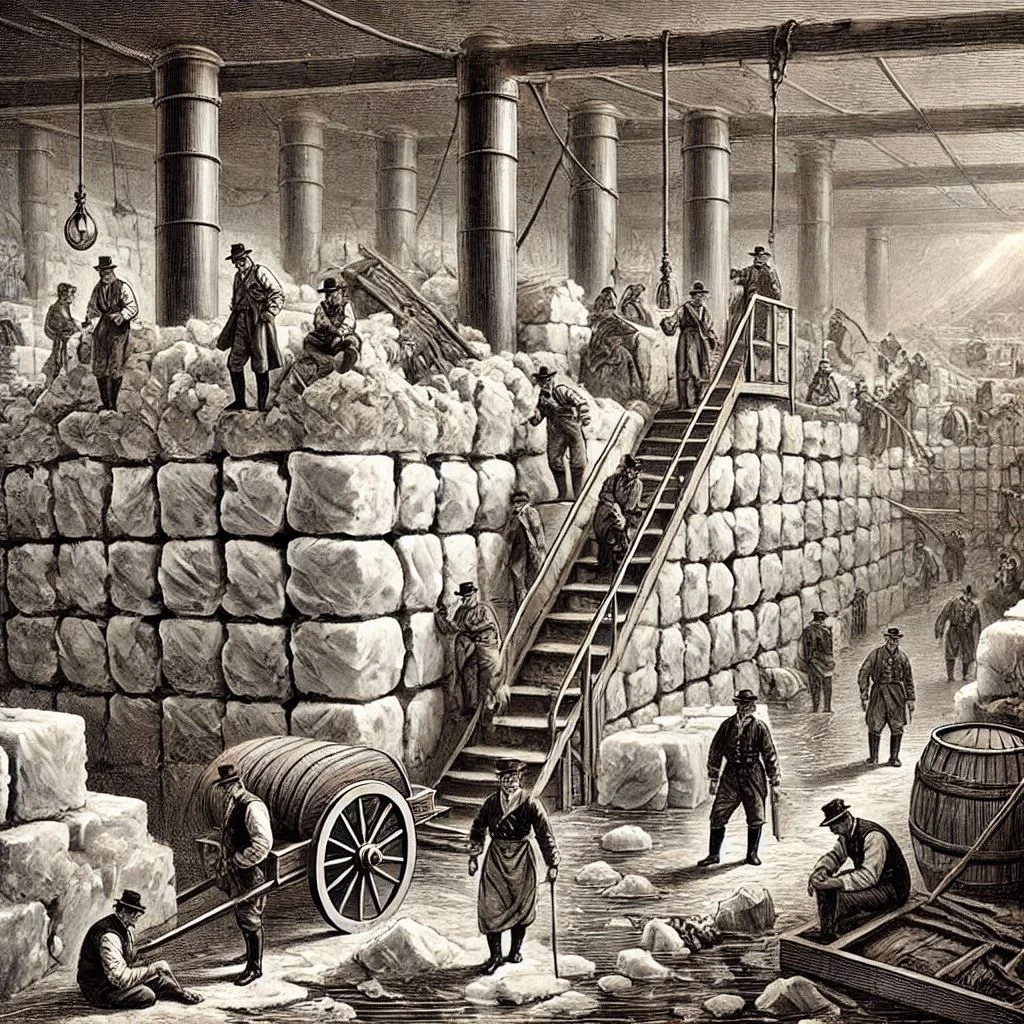
The Birth of the Modern Air Conditioner: Willis Haviland Carrier’s Invention
The true birth of modern air conditioning is credited to Willis Haviland Carrier, an engineer who, in 1902, designed the first air conditioning system to control temperature and humidity in a printing plant. Carrier’s system was revolutionary because it was the first to use refrigeration to cool air, while simultaneously removing moisture to improve the quality of printed materials. This invention, which was originally designed for industrial use, marked the beginning of air conditioning as a modern technology.
Carrier’s invention wasn’t just about cooling; it was about controlling the air. By regulating both temperature and humidity, Carrier’s system improved the comfort of indoor environments, paving the way for air conditioning in public and private spaces.
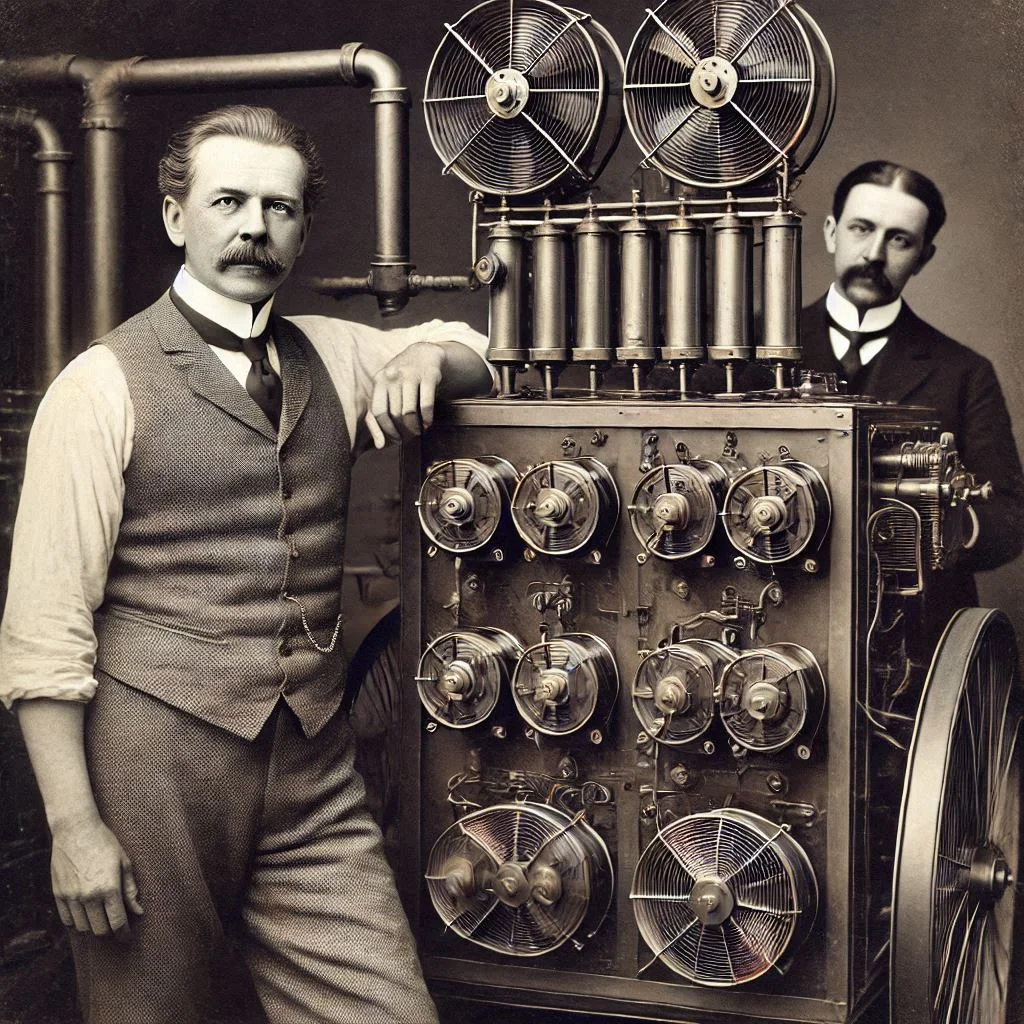
The Expansion of Air Conditioning: Early Commercial and Residential Use
Following Carrier’s breakthrough, air conditioning technology quickly spread from industrial applications to commercial buildings. In the 1920s, theaters, department stores, and office buildings began installing air conditioners to attract more customers. The introduction of air conditioning in movie theaters was particularly influential, making the cinema a year-round attraction, as audiences no longer had to endure the oppressive heat during summer months.
As air conditioning technology continued to improve in the 1930s and 1940s, it slowly made its way into homes. However, it was still a luxury item, as the cost of installation and maintenance was prohibitive for most people. It wasn’t until the 1950s and 1960s that the mass production of air conditioning units and the advent of smaller, more affordable window units made air conditioning accessible to a broader demographic.
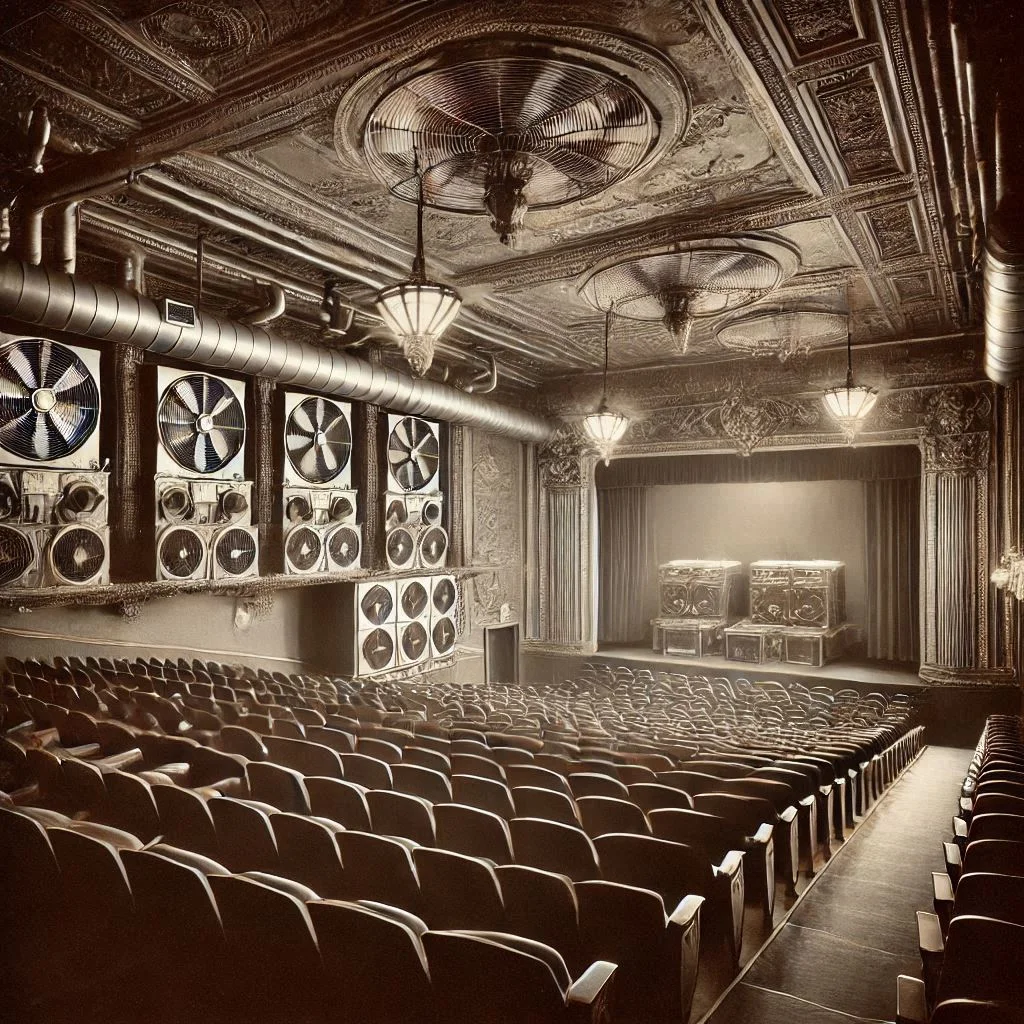
Technological Advancements in the 1960s: The Birth of the Compact Window Unit
By the 1960s, air conditioning technology had evolved significantly. The development of smaller, more efficient units allowed for the creation of the window air conditioner—an affordable solution for homeowners. These units could be installed in a window and provided a convenient way to cool individual rooms. This innovation made air conditioning more accessible to middle-class families and rapidly increased the adoption of air conditioning in homes, especially in warmer regions of the U.S.
The 1960s also saw the refinement of refrigerants, with Freon becoming the standard coolant used in air conditioners. These advancements led to more efficient systems that were capable of cooling larger spaces while consuming less energy.
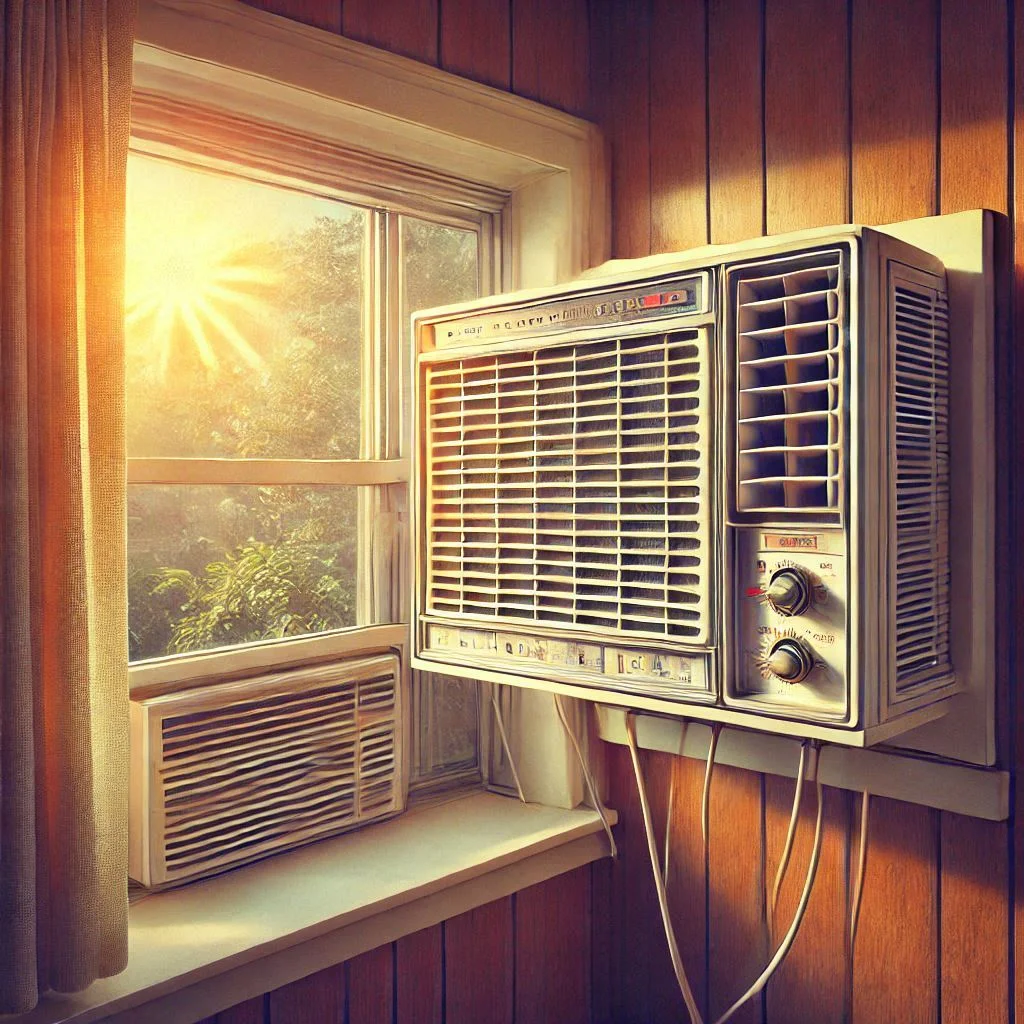
Impact of Modern Air Conditioning: A Revolution in Comfort and Productivity
The modern air conditioner did more than just provide physical comfort—it revolutionized how people lived, worked, and interacted with their environment. Air conditioning allowed businesses to operate year-round without the interruptions caused by extreme heat. It also played a significant role in improving the quality of life in homes, particularly for families living in regions with extreme summer temperatures.
The cooling effect of air conditioning had a profound impact on public health by reducing heat-related illnesses and deaths, especially in urban areas. It also influenced the architecture of buildings, as the ability to regulate indoor climates allowed for more expansive, glass-enclosed structures that would have previously been uninhabitable due to heat.
The 1960s Air Conditioner: A Game-Changer for Comfort
The 1960s were a defining decade in the evolution of air conditioning technology, representing a monumental shift that revolutionized how people experienced comfort in their homes, workplaces, and public spaces. This era marked the widespread accessibility of air conditioning, transforming it from an expensive luxury to an essential appliance in everyday life. As air conditioning became more efficient, affordable, and ubiquitous, it fundamentally changed the way people lived, contributing to better productivity, health, and overall quality of life.
The Rise of Affordable Air Conditioning Units
One of the most significant developments in the 1960s was the introduction of more affordable and compact air conditioning units. Prior to this time, air conditioners were typically large, expensive systems reserved for commercial buildings or the wealthy. The cost of installation and maintenance made air conditioning out of reach for most average households. However, the 1960s saw the advent of smaller, less expensive window units that could be easily installed in residential homes, bringing the comfort of cool air to millions of middle-class families.
The mass production of these window air conditioning units played a pivotal role in making air conditioning accessible to a broader demographic. In fact, the 1960s witnessed a dramatic increase in home installations, particularly in warmer climates like the Southern United States, where air conditioning became a necessity rather than a luxury. The ability to install these units without requiring major home renovations allowed homeowners to enjoy the benefits of climate control without the high price tag of central air systems.
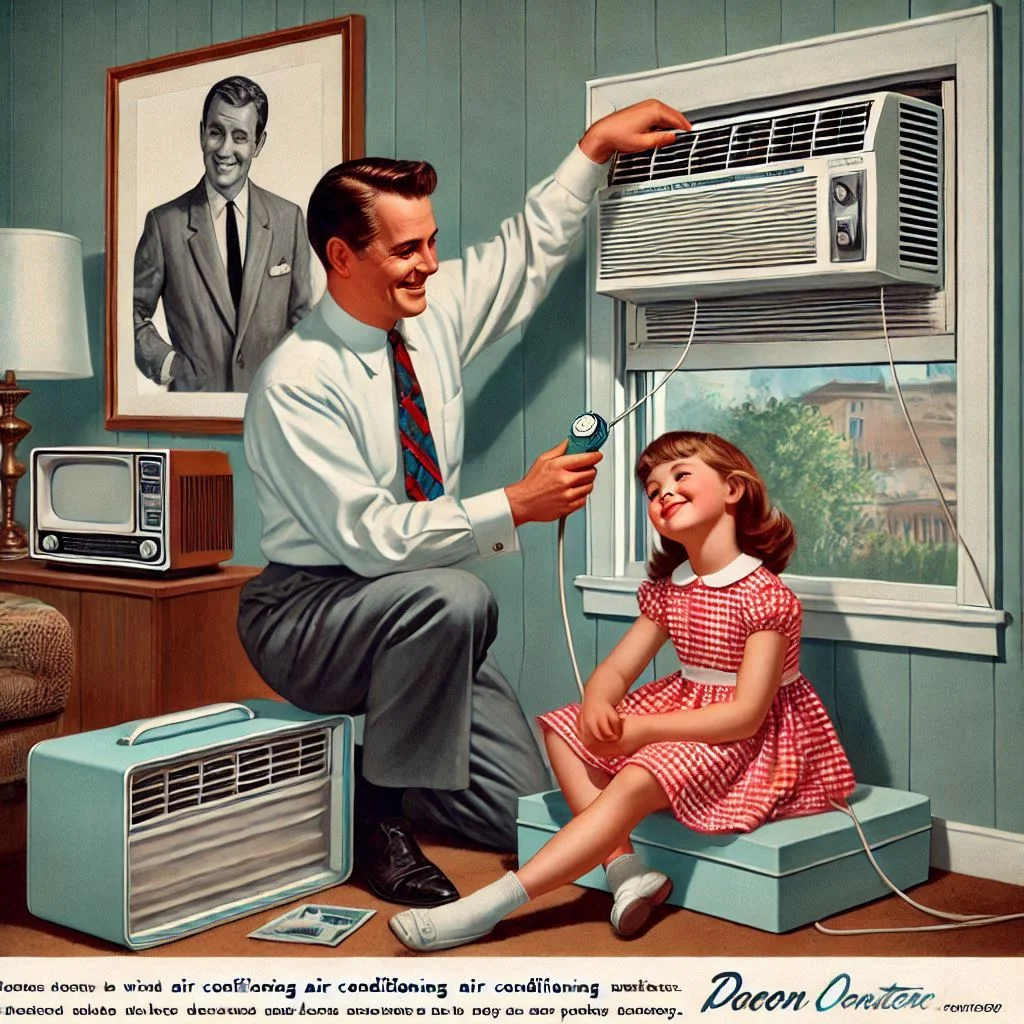
By the end of the decade, air conditioning was no longer a novelty—it had become a standard feature in many homes, especially in areas with hot, humid summers. The technology was a game-changer, making life much more comfortable and allowing families to stay cool without having to endure the sweltering heat that had once made summers unbearable.
Improved Efficiency and Technological Advancements
The 1960s also marked significant advancements in air conditioning technology. The development of more energy-efficient refrigerants, such as Freon, allowed air conditioners to provide better cooling with less energy consumption. These improvements not only made air conditioners more effective but also more environmentally friendly, as they reduced the strain on power grids and made it easier for homeowners to manage energy costs.
At the same time, manufacturers focused on enhancing the durability and reliability of air conditioning units. Innovations such as quieter compressors and more efficient cooling coils helped improve the performance of air conditioners, making them more dependable for everyday use. These technological advancements helped solidify the air conditioner as a must-have appliance in American homes.
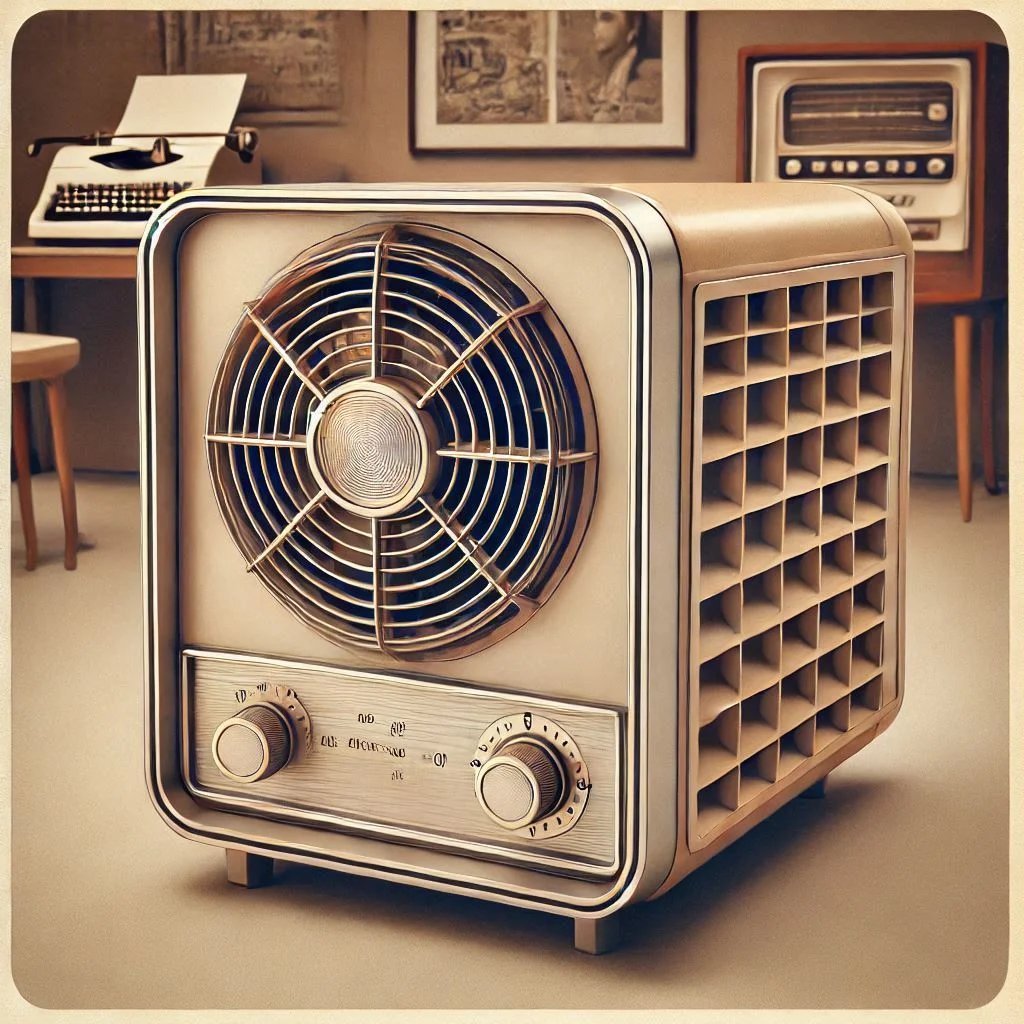
The Social Impact: Air Conditioning as a Status Symbol
During the 1960s, air conditioning began to symbolize modernity and technological progress. Owning an air conditioner was no longer just about comfort—it was a sign of status and prosperity. Families who could afford air conditioning were seen as embracing the latest innovations, signaling their ability to live in comfort and convenience. This cultural shift contributed to the rapid adoption of air conditioning in the 1960s, particularly in suburban homes, where larger living spaces made cooling systems more practical.
Air conditioning also played a significant role in the changing landscape of cities and neighborhoods. Suburbs, which had been expanding rapidly in the post-WWII era, became even more desirable with the addition of air conditioning, making homes more comfortable during hot summer months. For many, the installation of air conditioning was a key factor in their decision to move to the suburbs, as it provided a refuge from the oppressive heat of urban areas.
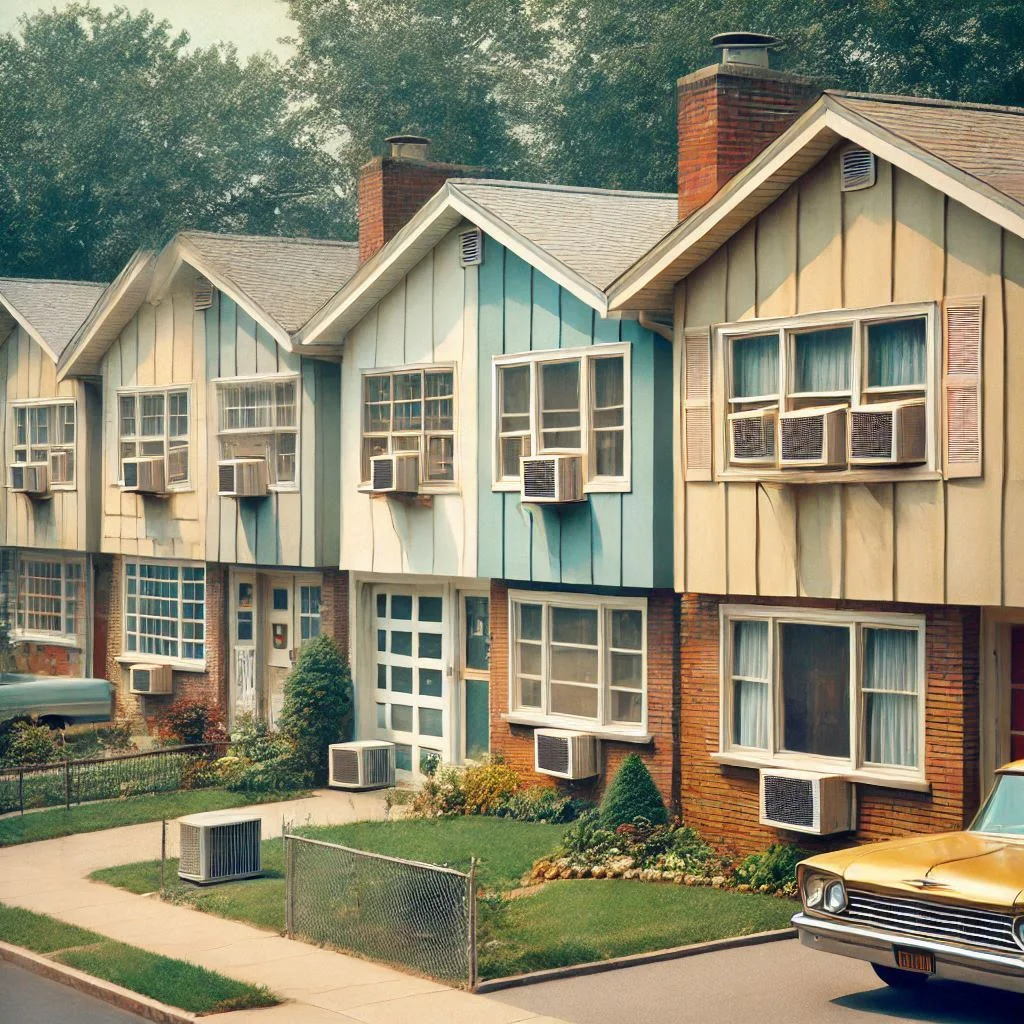
Health and Productivity Benefits
The impact of air conditioning on health and productivity cannot be overstated. Before the widespread adoption of air conditioning, high temperatures during summer months could cause discomfort, dehydration, and heat-related illnesses. In extreme cases, excessive heat could even be life-threatening, particularly for vulnerable populations such as the elderly and children. With the introduction of air conditioning, indoor temperatures could be maintained at a comfortable and safe level, significantly reducing the risk of heat-related health issues.
Moreover, air conditioning improved productivity in workplaces. In industries like manufacturing, where workers were often exposed to high heat levels, air conditioning made it possible to work efficiently in more controlled environments. Offices, too, became more comfortable places to work, increasing worker morale and reducing the fatigue that came with sweltering temperatures. Air conditioning also played a role in improving focus and concentration, particularly in areas with hot and humid climates, where high temperatures could lead to lethargy and reduced cognitive function.
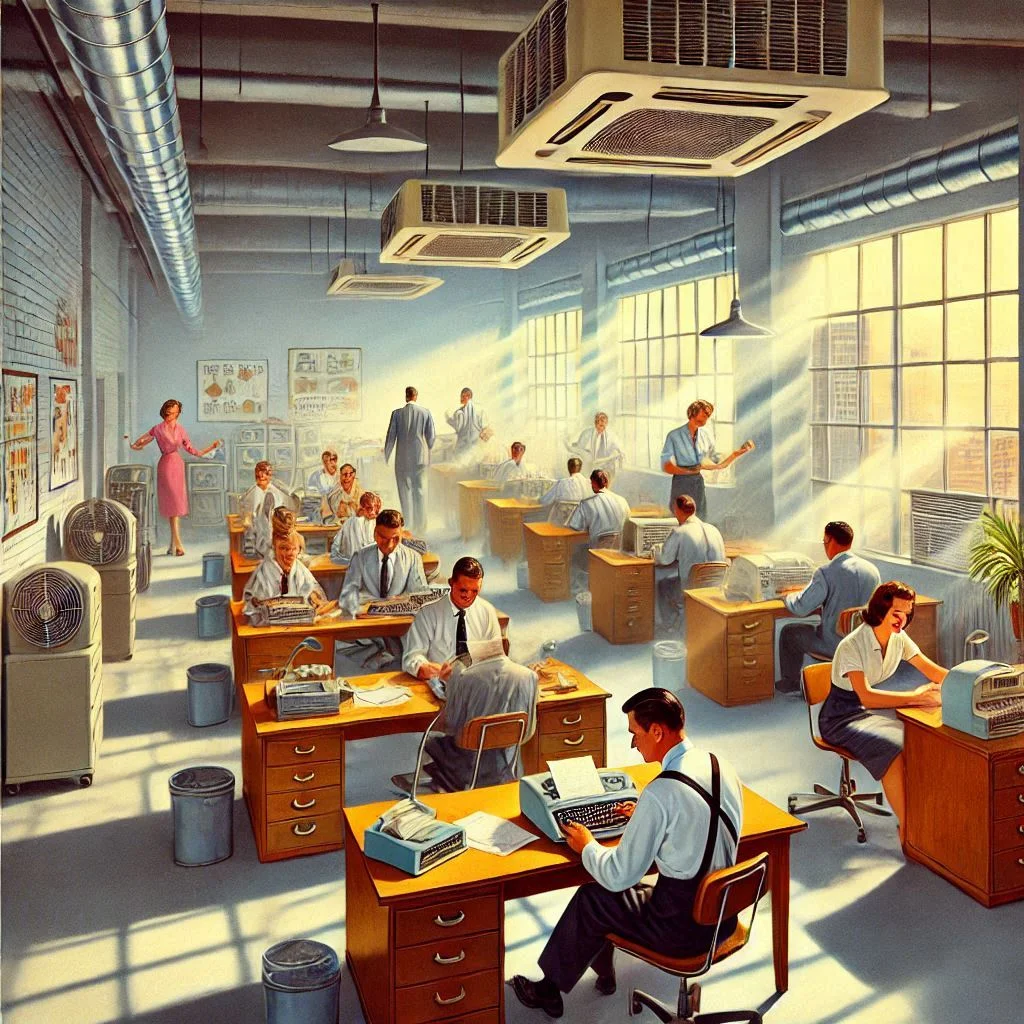
Efficiency and Innovation: How the 1960s Shaped Air Conditioner Designs
The 1960s was a decade of incredible transformation for the air conditioning industry, particularly in terms of design, efficiency, and performance. During this period, significant technological innovations reshaped the way air conditioning systems were conceived and created. Manufacturers focused on reducing energy consumption while improving the cooling performance of units, making air conditioning more accessible, cost-effective, and efficient. The designs that emerged during the 1960s laid the foundation for modern air conditioning units, influencing the appliances we use today.
The Push for Energy Efficiency: The 1960s and the Quest for Sustainability
As air conditioning became more prevalent in homes and businesses during the 1960s, concerns about energy consumption grew. Air conditioners, which were once considered a luxury, had now become an essential part of daily life. However, with increased usage came rising electricity costs, prompting a drive for energy-efficient designs. Manufacturers began exploring ways to reduce power consumption while still providing effective cooling.
This demand for efficiency led to several innovations. For instance, engineers developed more efficient compressors, which became smaller and lighter but could still deliver the same cooling power. The integration of more advanced refrigeration technology, including the refinement of refrigerants like Freon, allowed air conditioners to work more efficiently and economically. These improvements were essential in making air conditioning a viable option for middle-class families, not just for businesses or the affluent.
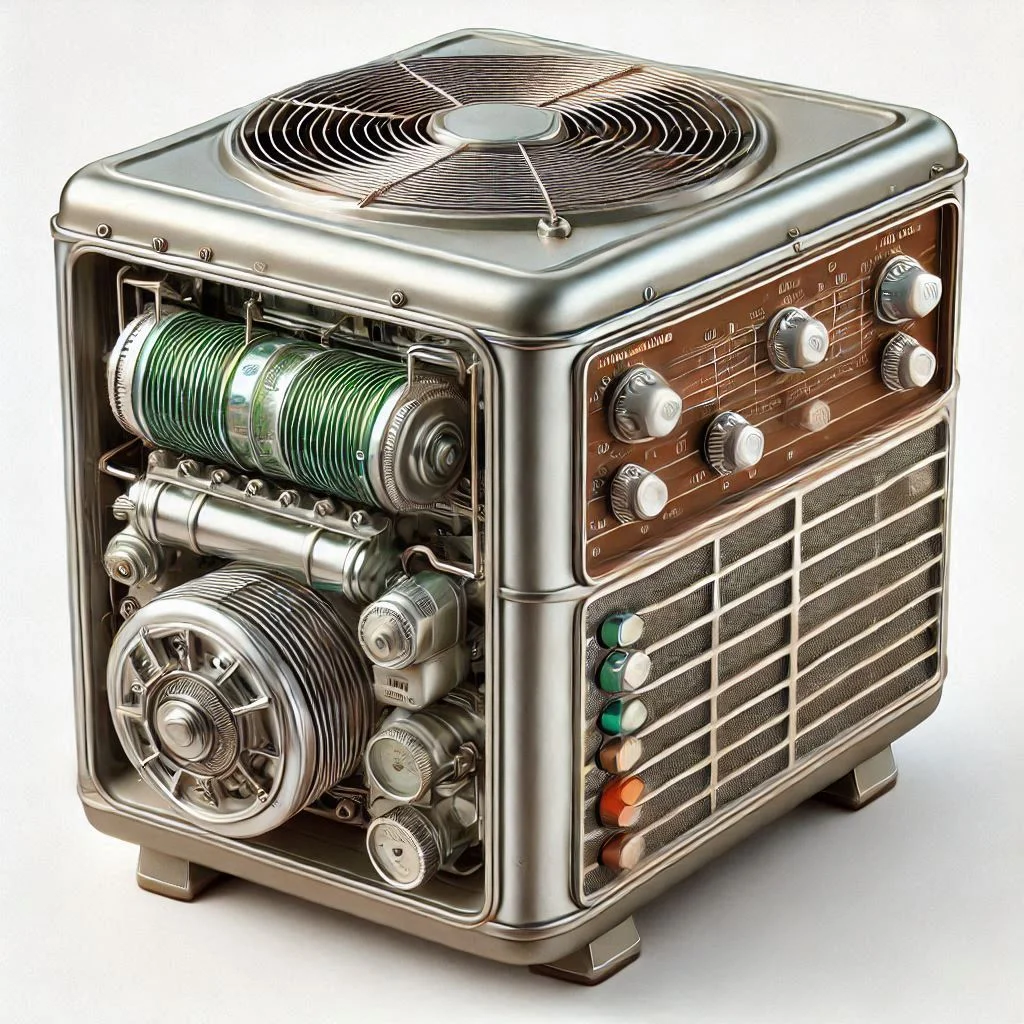
Compact and Sleek Designs: The Shift to Window Units
One of the most significant design changes of the 1960s was the widespread adoption of compact, window-mounted air conditioning units. These units revolutionized the way people installed air conditioning in their homes. Prior to this, central air conditioning systems were expensive and difficult to install. The window unit, however, was affordable, easy to install, and efficient, making it a popular choice for homeowners.
Window units were designed to fit snugly into standard window frames, cooling individual rooms rather than entire homes. This approach made air conditioning more accessible by reducing installation costs and energy consumption. The ability to cool a single room instead of an entire house helped homeowners save money on both installation and energy bills. Additionally, the design of these units became more refined over time, with quieter operations and sleeker, more aesthetic appearances that blended well with home interiors.
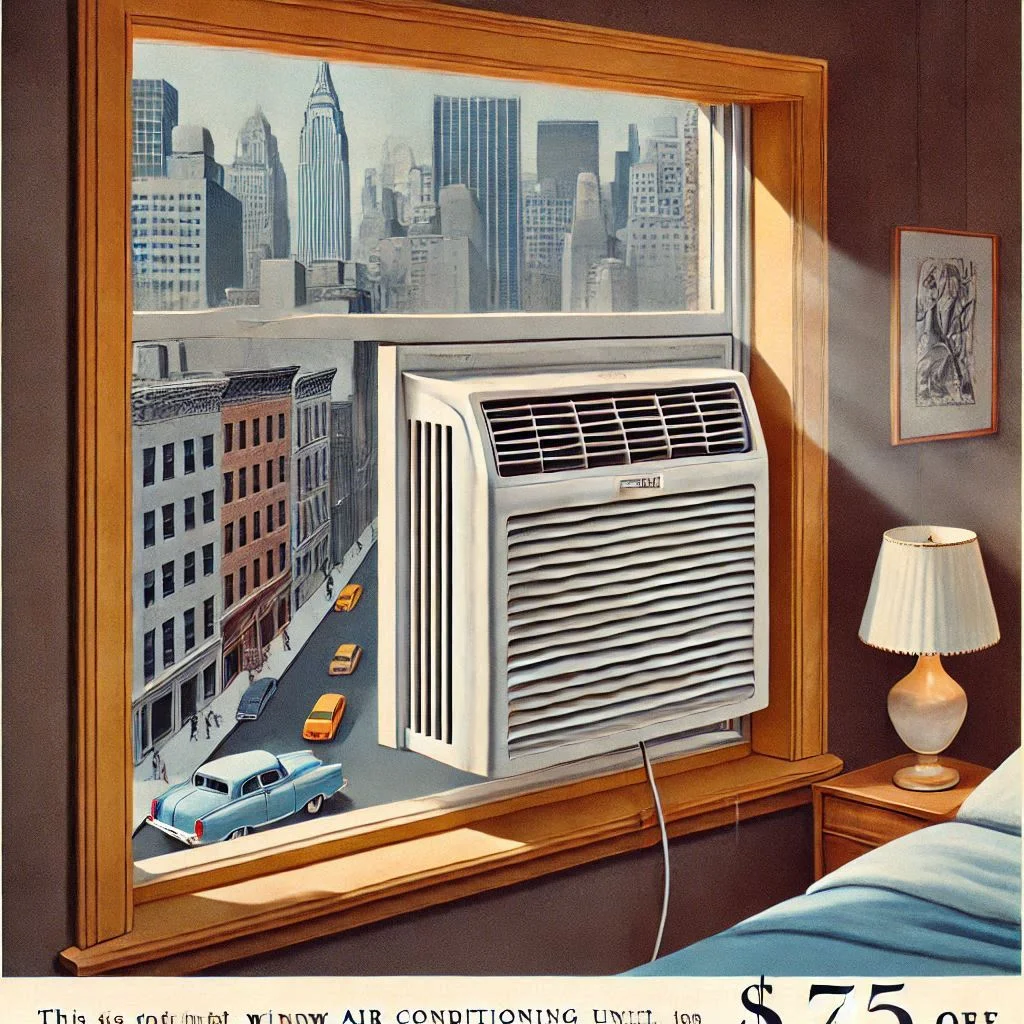
Improved Performance: Enhancing Cooling Efficiency
As part of the innovation push, manufacturers focused on improving the overall performance of air conditioning units during the 1960s. These improvements included optimizing the cooling coils and enhancing airflow systems. By designing more effective heat exchangers and using materials that better facilitated heat transfer, engineers were able to increase the cooling efficiency of air conditioning systems without requiring additional energy.
One notable advancement was the development of better evaporator and condenser coil designs. These components became more compact and efficient, allowing air conditioners to cool a room faster and with less energy consumption. The result was a significant improvement in performance that reduced the operating costs for consumers, while still delivering powerful and reliable cooling.
The Role of Refrigerants in Efficiency
Refrigerants played a crucial role in the evolution of air conditioning during the 1960s. Early air conditioners used refrigerants that were harmful to the environment and inefficient in terms of energy consumption. By the 1960s, however, Freon became the standard refrigerant in many air conditioning units. This new compound offered a safer and more energy-efficient alternative to earlier refrigerants, leading to both improved cooling performance and lower environmental impact.
Freon’s properties allowed air conditioners to run more efficiently, reducing the amount of energy required to cool air. As a result, air conditioners became more affordable to operate, which was particularly important as more and more households began to install these units. The widespread adoption of Freon also spurred innovation in the development of additional refrigerants that would be even more efficient and environmentally friendly in later years.
Image prompt for this section:
Prompt: A vintage image of a 1960s Freon gas cylinder and refrigeration system, illustrating the use of Freon as the standard refrigerant in air conditioning units during this time.
Consumer-Friendly Features: From Controls to Design Aesthetics
In addition to performance and energy efficiency, air conditioning manufacturers in the 1960s began focusing on consumer convenience and aesthetics. The designs of air conditioning units became more user-friendly, with intuitive controls for temperature and fan speed. By adding features such as thermostats and adjustable vents, manufacturers gave consumers greater control over their indoor environment.
In terms of aesthetics, air conditioning units were designed to be less intrusive and more visually appealing. The sleek, compact window units that emerged in the 1960s were much more aesthetically pleasing than their bulky predecessors, which made them more acceptable for use in home interiors. The focus on aesthetics and ease of use helped air conditioning units become an essential household appliance for millions of people.
Image prompt for this section:
Prompt: A 1960s family room with a window air conditioning unit featuring user-friendly controls and a sleek design, illustrating the consumer-friendly features and aesthetic improvements of the era.
H2 – The 1960s and the Expansion of Air Conditioning in Homes
The 1960s marked a pivotal period in the widespread adoption of air conditioning in American homes. During this decade, what was once a luxury for the wealthy became an accessible and essential feature for middle-class families, especially in areas with hot, humid climates. With advances in technology, reduced manufacturing costs, and the growing demand for comfort, air conditioning expanded beyond commercial spaces into residential areas, fundamentally changing how people lived. This article explores the factors that contributed to the rise of air conditioning in homes during the 1960s and its impact on family life, the economy, and society at large.
The Shift from Luxury to Necessity
Before the 1960s, air conditioning was largely seen as a luxury reserved for large office buildings, department stores, and the wealthy elite. Central air conditioning systems were expensive, and window units were too costly for many homeowners. However, the 1960s ushered in a new era where air conditioning began to transition from a luxury to a necessity, particularly in warmer regions like the southern United States. As manufacturers streamlined production and improved efficiency, the cost of air conditioners decreased, making them more affordable for the average consumer.
The increasing accessibility of window units, which were compact and relatively easy to install, played a significant role in making air conditioning more affordable. By the late 1960s, homeowners could install air conditioning units in individual rooms, which allowed for more targeted cooling and reduced energy consumption. This shift helped air conditioning become a staple in many homes, especially in areas with high summer temperatures.
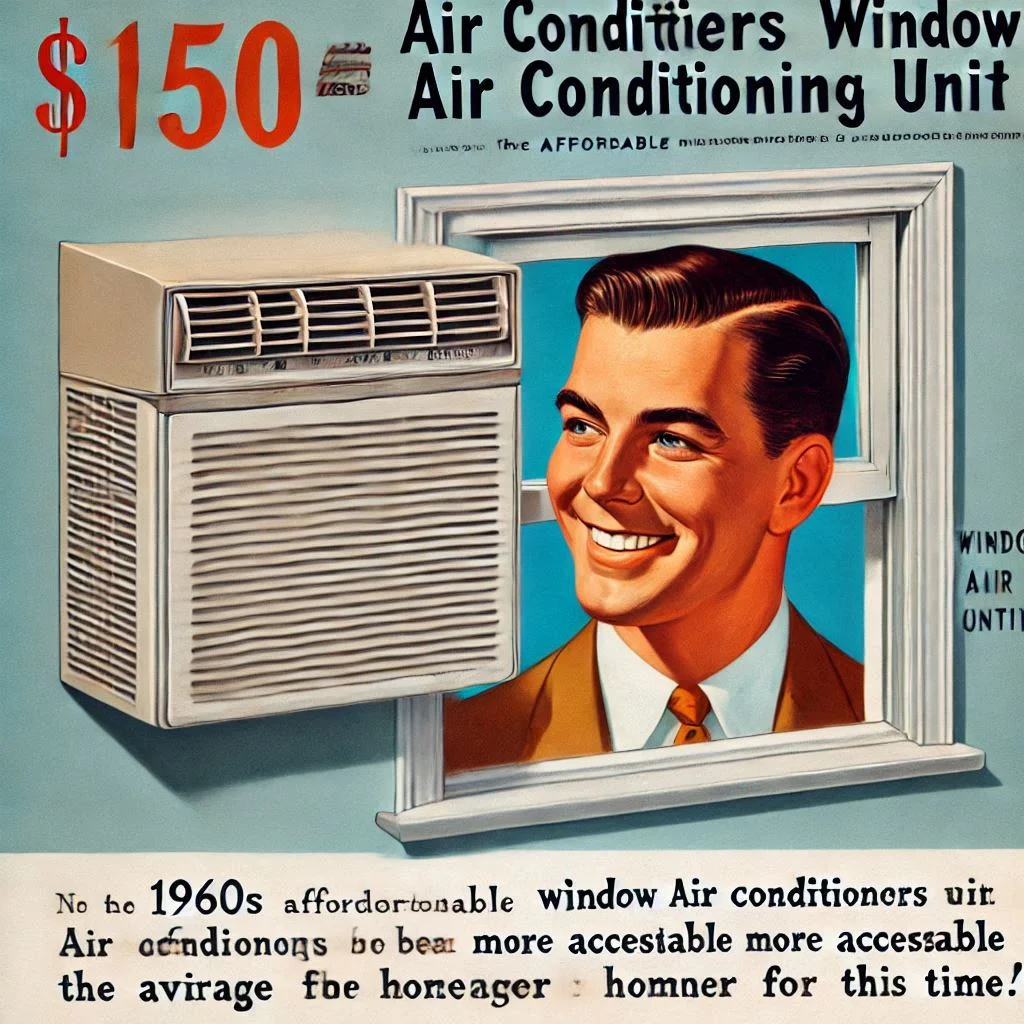
The Role of Post-War Suburbia in the Air Conditioning Boom
The post-WWII era saw a massive migration to the suburbs, where families were seeking new homes with modern amenities. By the 1960s, this suburban boom had created a market ripe for air conditioning expansion. New suburban homes were often larger than their urban counterparts, and as the demand for comfort and convenience grew, air conditioning became an essential feature in many of these homes. The growing middle class, empowered by economic prosperity and greater disposable income, was keen on adopting technologies that could enhance their quality of life, and air conditioning was at the top of that list.
Suburbia also offered more space for the installation of window air conditioning units, which became the most popular choice in residential areas during the 1960s. These units provided a cost-effective way for families to stay cool without needing to install expensive central air systems. The appeal of suburban living, combined with the comfort of air-conditioned homes, helped make the 1960s the decade in which air conditioning truly became a mainstream household necessity.
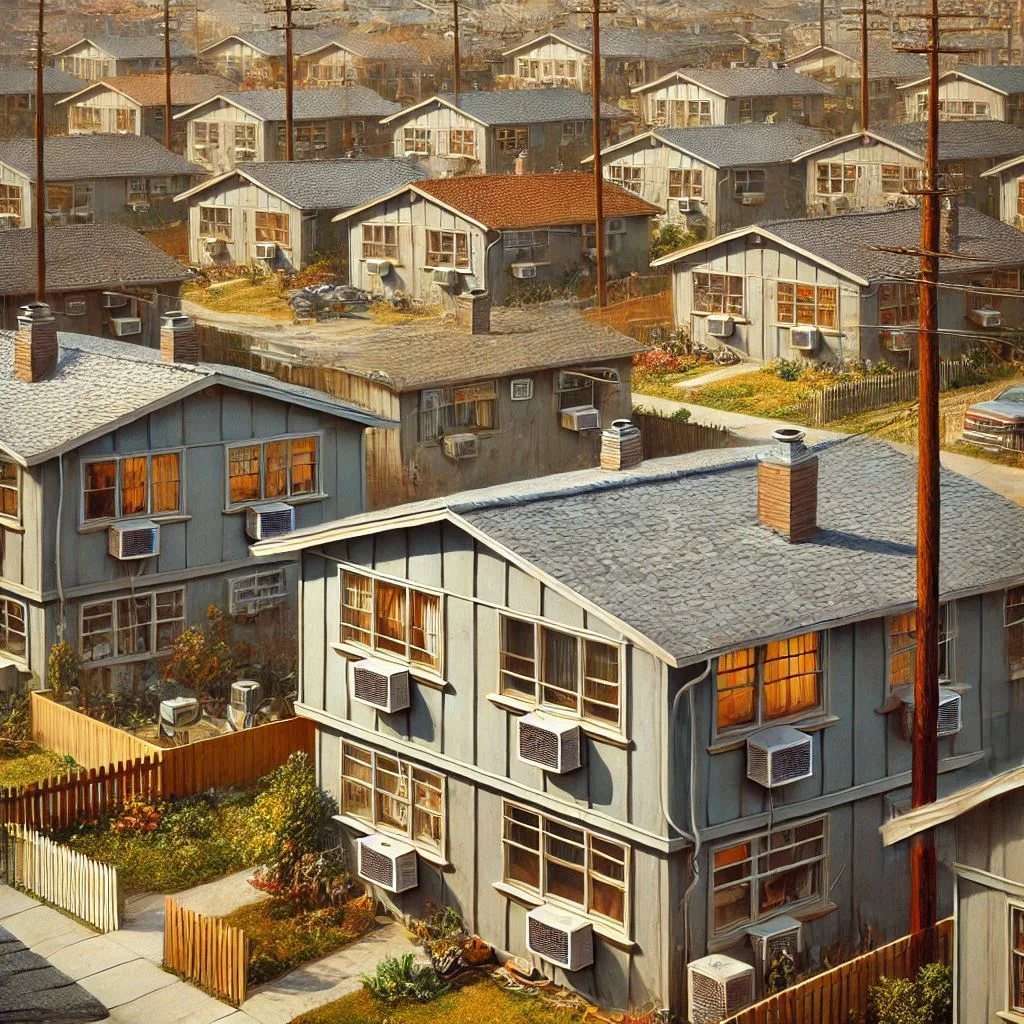
Technological Advancements Drive Affordability
One of the primary factors that made air conditioners more accessible to the average homeowner was technological advancement. During the 1960s, manufacturers developed more efficient and cost-effective components, which helped to reduce the price of air conditioning units. Improved manufacturing processes and innovations like the use of smaller, more energy-efficient compressors and motors allowed air conditioners to become both more affordable and more reliable.
The 1960s also saw the refinement of refrigerants like Freon, which enhanced the cooling capacity and efficiency of air conditioners. This made it possible to produce units that were smaller, more affordable, and more powerful, allowing families to install them in individual rooms rather than relying on expensive central air systems. The result was a democratization of air conditioning, where more households could enjoy the comfort of a cooled home during the summer months.
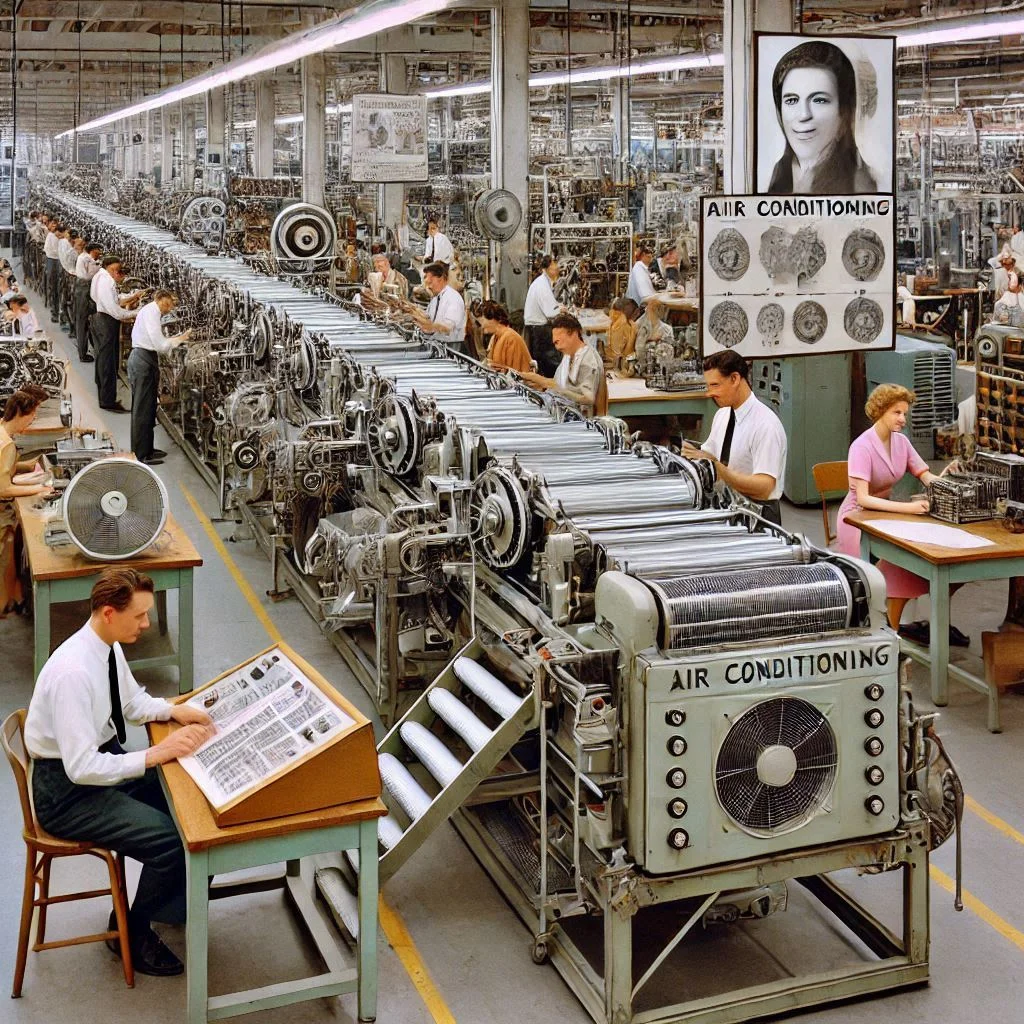
Comfort and Health Benefits Drive Popularity
The 1960s also saw growing awareness of the health benefits of air conditioning. In areas where high humidity and extreme heat were common, air conditioning provided not only comfort but also relief from heat-related illnesses such as dehydration and heat stroke. For families with young children, the elderly, or individuals with respiratory conditions, air conditioning became a crucial tool for improving health and quality of life.
Beyond physical comfort, air conditioning also offered mental and emotional relief. Before the widespread availability of air conditioning, families often struggled to sleep during hot summer nights, and many people found it difficult to focus or work in sweltering conditions. With the introduction of air conditioning, families could enjoy a more comfortable living environment, sleep better, and increase productivity in their daily lives. The cooling relief air conditioning offered during the hot summer months was seen as essential for maintaining a high quality of life.
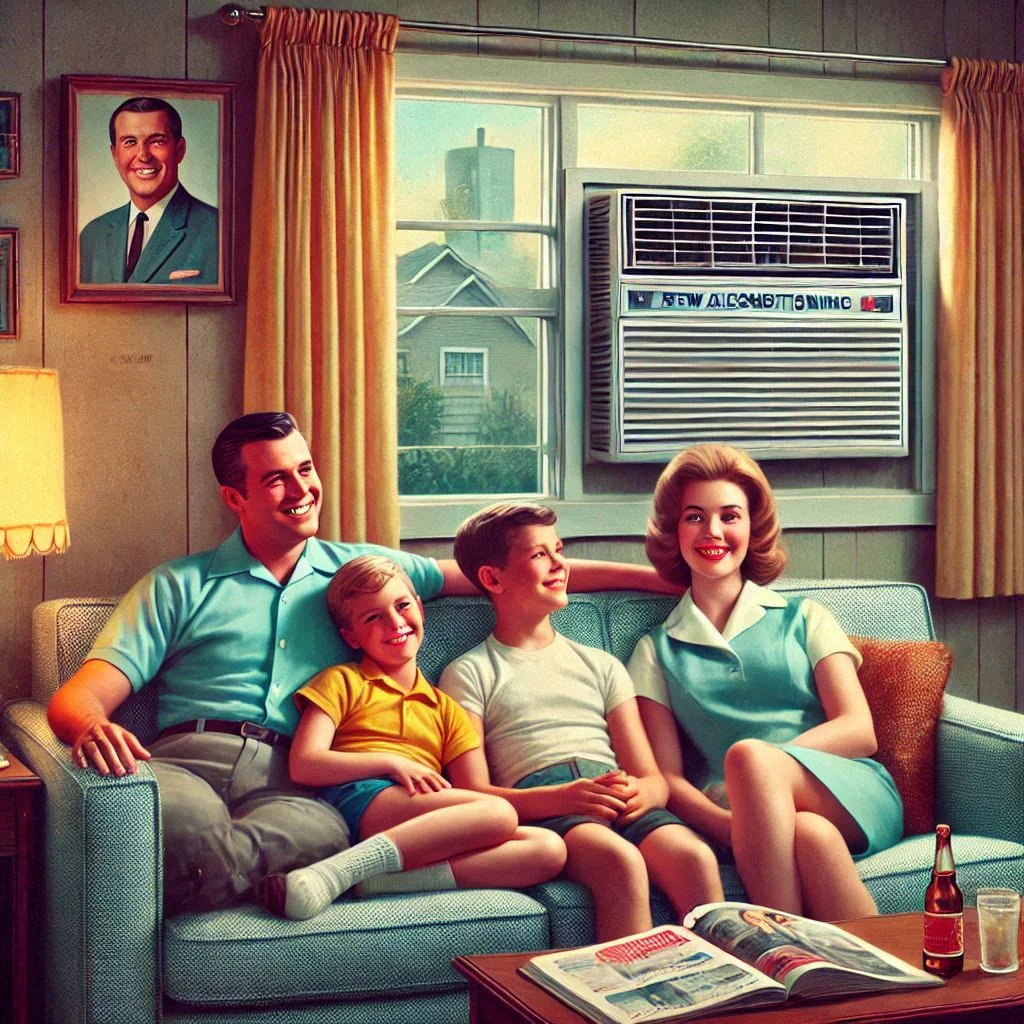
Economic Impact: Air Conditioning as an Investment
Air conditioning became more than just a comfort feature—it became an investment. For homeowners in the 1960s, air conditioning units added value to their homes and made them more attractive to potential buyers. In regions where air conditioning was a must-have feature, homes without it were less likely to sell, and property values were affected.
Real estate developers and builders also recognized the growing demand for air-conditioned homes. As a result, new homes were often built with air conditioning systems as a standard feature. For homeowners, the initial investment in an air conditioner was offset by the long-term benefits of comfort and increased property value, making it a wise financial choice.
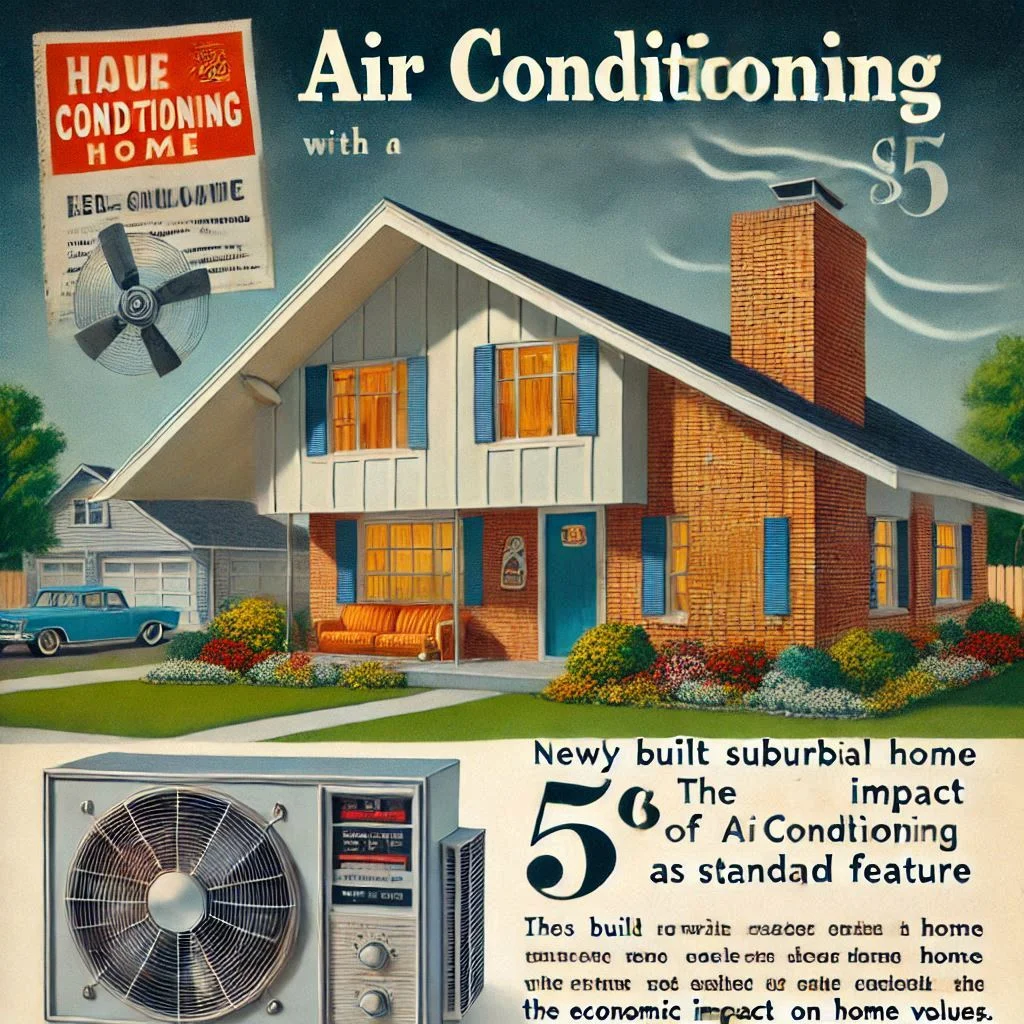
H2 – Air Conditioning in the 1960s: Changing Society and Industry
The 1960s was a transformative decade in the history of air conditioning, not just in terms of technology but in the profound societal and industrial changes it spurred. Air conditioning, once considered a luxury, became an essential part of modern life during this period. The expansion of air conditioning in public buildings, offices, homes, and industries had far-reaching effects, influencing everything from business operations to public health, urban planning, and even cultural shifts. This article delves into how air conditioning in the 1960s revolutionized society and impacted various sectors, ultimately contributing to the growth of modern economies and the development of urban spaces.
The Economic Impact: Boosting Business and Productivity
The widespread adoption of air conditioning in the 1960s had a significant impact on business operations, particularly in offices, retail spaces, and industrial facilities. As air conditioning became more affordable and efficient, companies began installing it in their workplaces to enhance employee comfort and productivity. Workers were no longer hindered by the oppressive heat of summer, and offices could function without interruptions caused by the weather.
The introduction of air-conditioned environments in businesses also changed the way people worked. Office buildings, now cool and comfortable year-round, saw increased worker satisfaction and improved focus. This contributed to greater productivity, as employees could work longer hours without the physical toll of heat. Additionally, retail businesses, especially those in warmer climates, began installing air conditioning to improve customer experience, which in turn boosted sales.
In industries that relied on temperature-sensitive materials, such as pharmaceuticals, manufacturing, and electronics, air conditioning became crucial for maintaining product quality. As businesses adapted to the growing availability of air conditioning, the economy saw a boost in efficiency, leading to a more productive workforce and more thriving businesses.
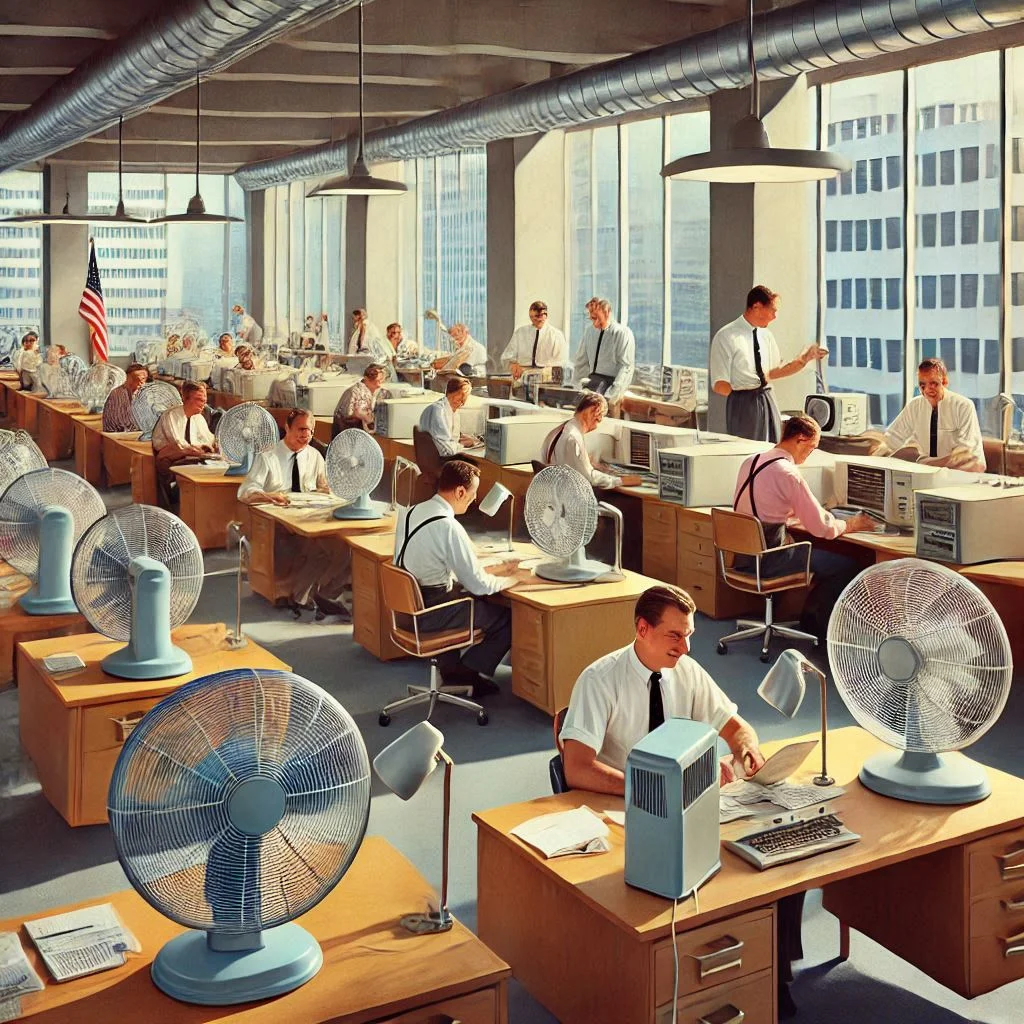
Public Health Improvements: A New Standard for Health and Well-Being
Beyond comfort, air conditioning had a profound impact on public health during the 1960s. Before the widespread use of air conditioning, hot and humid environments could lead to heat-related illnesses, such as heat stroke, dehydration, and exhaustion. In cities with extreme summer temperatures, air conditioning became an essential tool for preventing these conditions, particularly for vulnerable populations like the elderly, children, and individuals with respiratory issues.
In hospitals and healthcare facilities, air conditioning systems became critical for maintaining sterile environments and controlling humidity. The ability to regulate temperature in operating rooms and patient care areas helped reduce the spread of infections and improved overall patient outcomes. The medical community began recognizing the value of air conditioning in hospitals, making it a standard feature in healthcare settings by the late 1960s.
At a broader level, air conditioning improved quality of life by providing a safe and comfortable environment for individuals with respiratory conditions such as asthma or allergies. By filtering and cooling the air, air conditioning units helped reduce the presence of allergens and pollutants, offering relief to those who previously suffered in the heat and humidity.

Urban Development and the Growth of Air-Conditioned Cities
As air conditioning technology spread throughout the 1960s, it had a profound effect on urban development and city planning. In regions where high heat and humidity were common, air-conditioned buildings became a necessity. This led to the construction of modern office buildings, shopping centers, and public spaces that were designed with air conditioning in mind. In many cities, this transformed the skyline and the urban landscape, as new high-rise buildings were constructed to accommodate both the growing population and the increasing demand for air-conditioned spaces.
Air conditioning also played a role in the migration of people to cities that previously had less appeal due to harsh weather conditions. Cities in the southern and western United States, like Phoenix and Dallas, experienced rapid population growth as air conditioning made these areas more comfortable to live and work in. The cooling effect of air conditioning helped eliminate one of the major barriers to living in hot climates, thus encouraging the growth of new urban centers and expanding the housing market.
At the same time, air conditioning began to shape the design and architecture of homes and buildings. Architects and developers began incorporating air conditioning units into their designs, resulting in more energy-efficient, comfortable, and livable spaces. Suburban homes were often built with space for window units or, in some cases, central air systems, which became an important selling point for new homeowners.
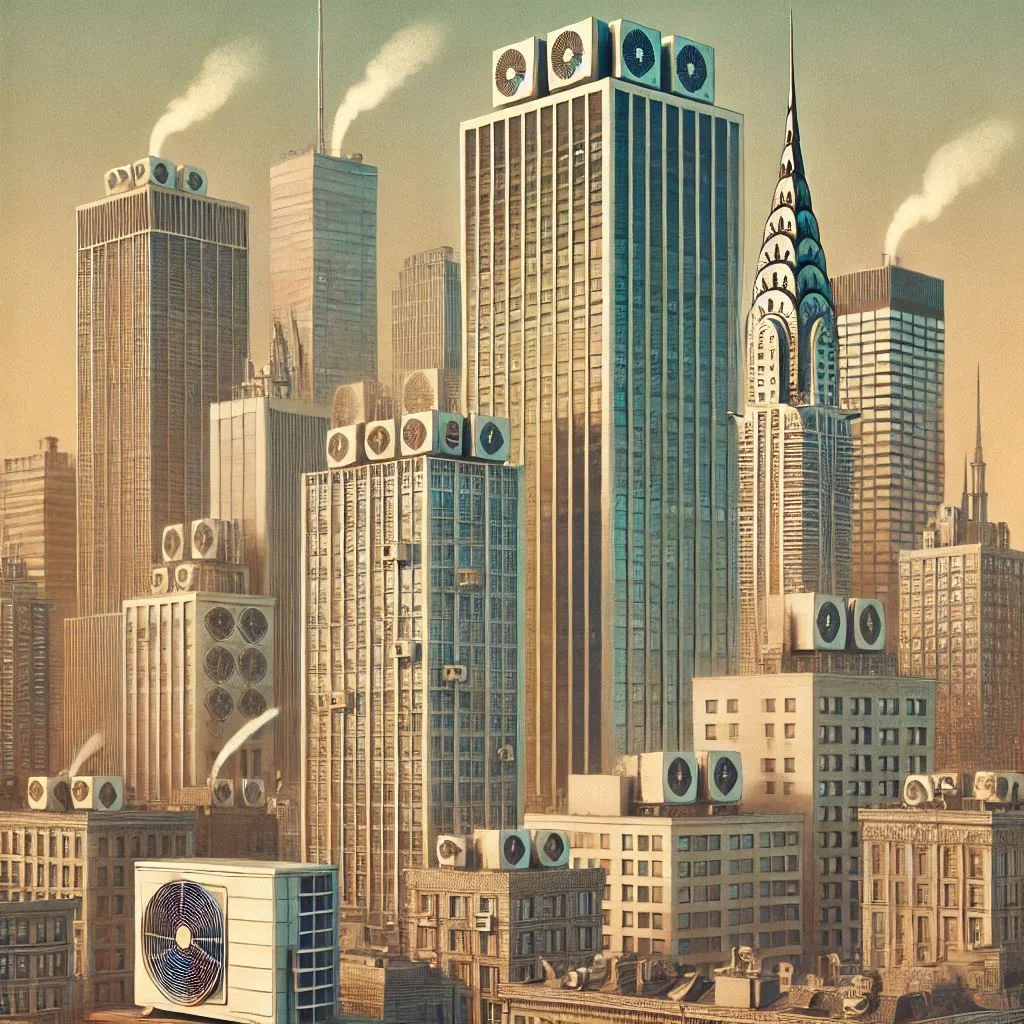
Cultural Shifts: Air Conditioning and the Transformation of Daily Life
The 1960s also witnessed cultural shifts driven by the increased availability of air conditioning. As homes, offices, and public spaces became more comfortable due to air conditioning, lifestyles changed. For example, more people began spending time indoors during the hot summer months, leading to increased reliance on television, movies, and air-conditioned shopping malls for entertainment. Air conditioning made it possible for families to enjoy summer without the oppressive heat, leading to new forms of socializing and leisure activities.
The comfort of air-conditioned homes and offices also influenced work-life balance, as people were able to stay productive in the summer heat and enjoy their leisure time without being exhausted by the heat. The cultural expectation of comfort grew, and people began to see air conditioning as not just a luxury but a necessity that enhanced their quality of life.
Additionally, air conditioning contributed to the rise of consumerism in the 1960s, as businesses and consumers sought products designed for a comfortable, climate-controlled environment. As a result, the air conditioning industry itself flourished, and its impact on culture and commerce continued to grow.
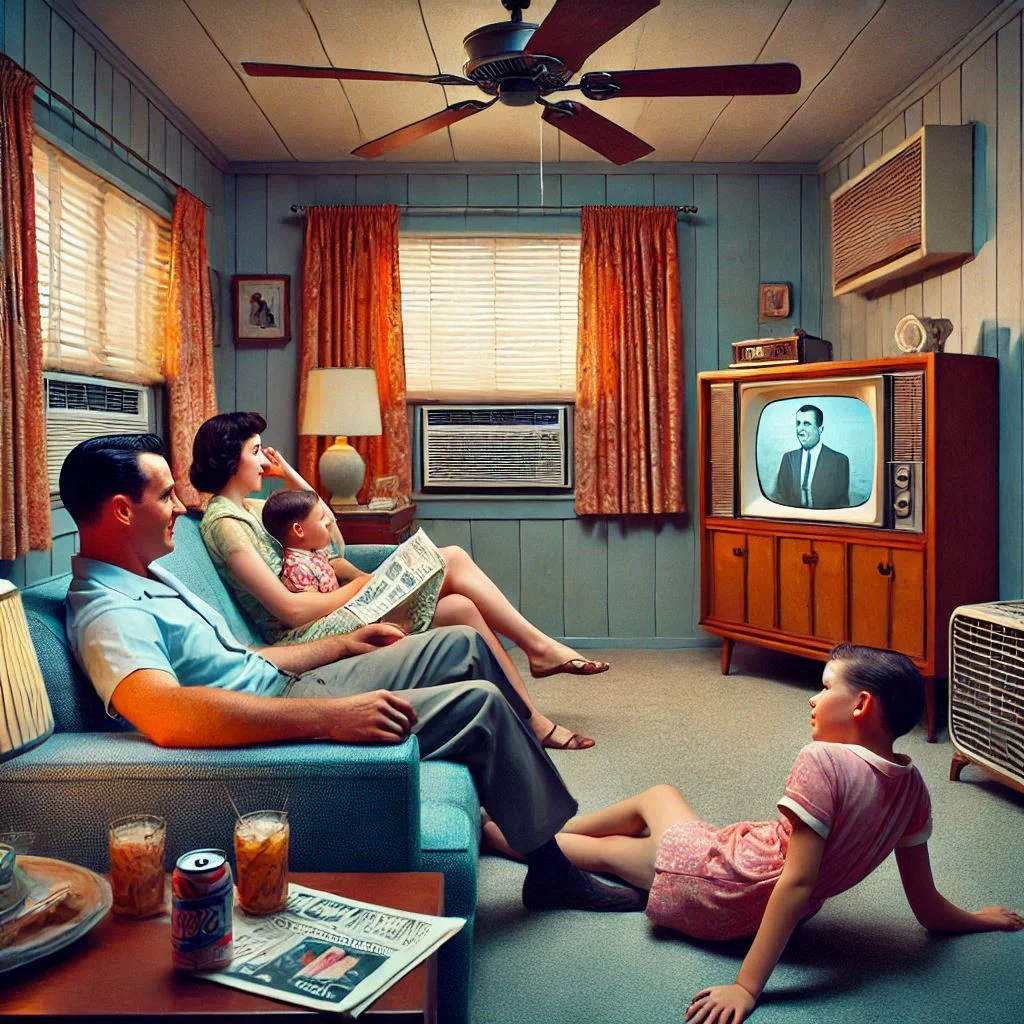
The Future of Air Conditioning: What’s Next After the 1960s
The 1960s marked a pivotal turning point in the evolution of air conditioning technology, setting the stage for the continued development and refinement of cooling systems that would shape the modern world. As air conditioning became more accessible and widespread, it triggered a series of advancements that led to more energy-efficient, cost-effective, and environmentally friendly solutions. Today, the future of air conditioning looks poised to tackle the challenges of climate change, sustainability, and energy consumption while integrating innovative features that will define the next generation of cooling technologies.
The Rise of Smart and IoT-Enabled Air Conditioning
One of the most significant advancements in air conditioning since the 1960s has been the integration of smart technology. With the advent of the Internet of Things (IoT), air conditioning systems are becoming increasingly intelligent, offering more control, convenience, and energy savings for homeowners and businesses alike.
Smart thermostats, such as Nest and Ecobee, allow users to control their air conditioning units remotely through smartphones or voice assistants. This level of control means that users can adjust their indoor temperature to optimize comfort and energy consumption from anywhere. Furthermore, advanced sensors in smart AC units can monitor indoor humidity, temperature, and air quality, adjusting the system’s settings automatically to maintain an ideal environment.
The ability to control air conditioning systems from a mobile device allows for increased energy efficiency. For example, users can set schedules to ensure their air conditioners are not running unnecessarily while they’re away. The integration of AI in some models also allows systems to learn user preferences over time, enhancing energy savings without sacrificing comfort.
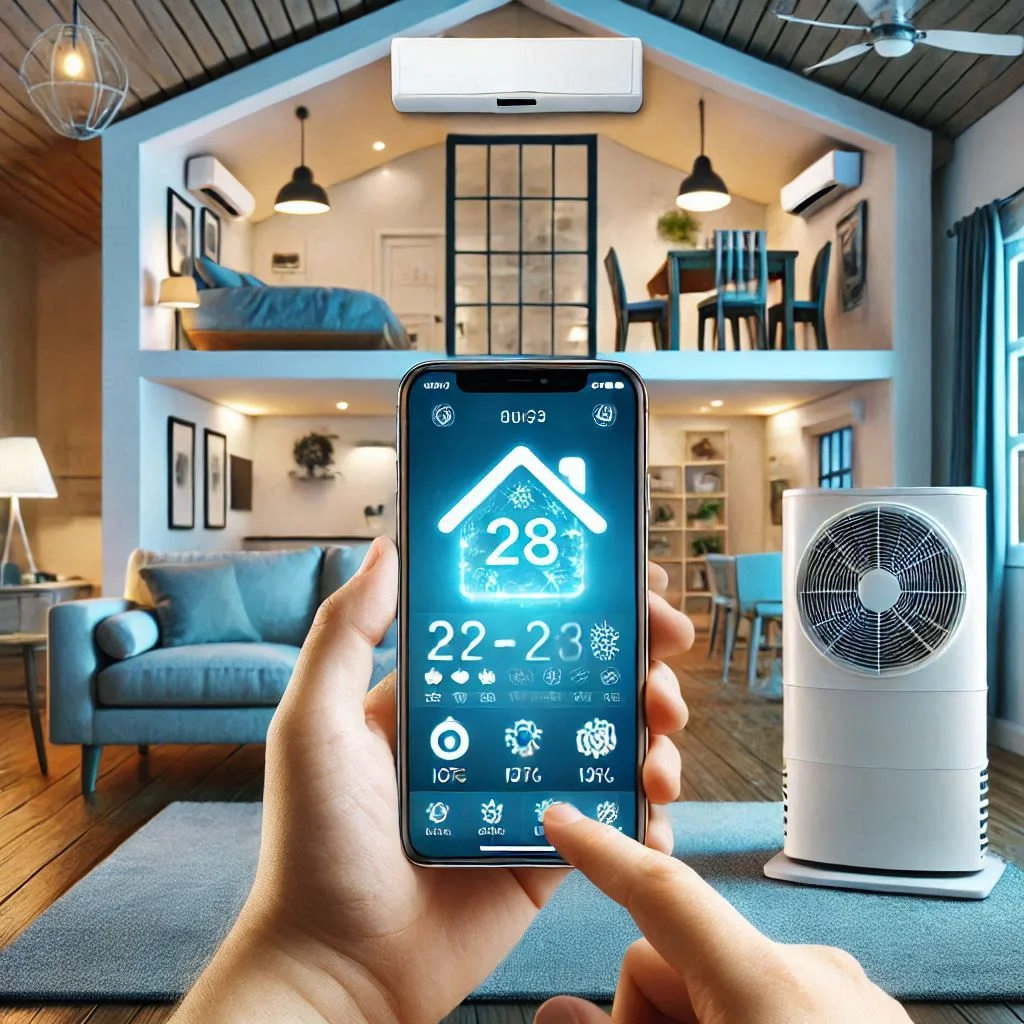
Energy Efficiency and Sustainable Cooling Solutions
As concerns about climate change and energy consumption continue to grow, the air conditioning industry is turning toward sustainable and energy-efficient solutions. The 1960s laid the foundation for a global reliance on air conditioning, but the future is focused on making these systems more eco-friendly and reducing their environmental impact.
Modern air conditioners are designed to consume less energy while providing more effective cooling. Innovations such as variable-speed compressors, which adjust the system’s cooling output based on real-time demand, have dramatically improved energy efficiency. These systems use only the amount of energy needed to maintain a consistent temperature, leading to lower electricity bills and reduced greenhouse gas emissions.
Another major shift in air conditioning is the use of eco-friendly refrigerants. Traditional refrigerants, such as R-22 (chlorofluorocarbons or CFCs), have been phased out due to their harmful effects on the ozone layer. The industry is now focusing on more sustainable refrigerants, such as R-410A and natural refrigerants like ammonia, carbon dioxide, and hydrocarbons. These alternatives not only help preserve the ozone layer but also provide superior cooling efficiency.
In addition to energy-efficient designs, the development of solar-powered air conditioning systems is gaining momentum. Solar AC units harness energy from the sun to power cooling systems, reducing dependence on grid electricity and offering a more sustainable cooling option for homes and businesses. As solar technology continues to improve, the combination of solar power and air conditioning could become a standard for environmentally-conscious consumers.
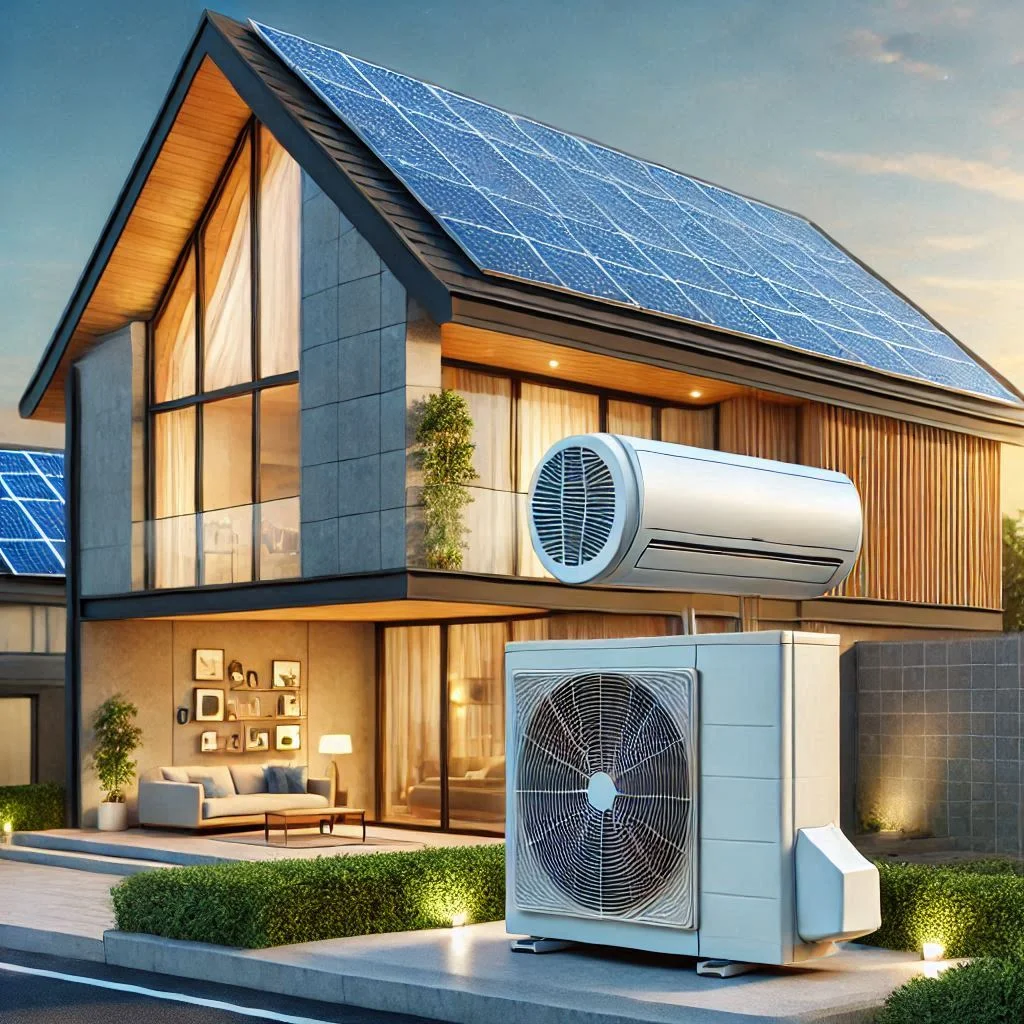
The Role of AI and Machine Learning in Air Conditioning Systems
Artificial Intelligence (AI) and machine learning are playing an increasingly important role in the future of air conditioning. These technologies are enabling air conditioning systems to become more adaptive and self-regulating, offering an even higher level of comfort and energy efficiency.
AI algorithms are being integrated into modern air conditioners to analyze factors such as weather patterns, occupancy data, and building insulation. By processing this information, AI systems can make real-time adjustments to the cooling output, ensuring that the system operates as efficiently as possible. For example, AI can predict when a room will be occupied and adjust the temperature accordingly, preventing the air conditioner from running when it’s not needed.
Machine learning can also help improve the maintenance and longevity of air conditioning systems. Through the continuous monitoring of system performance, AI can detect irregularities or potential malfunctions early, prompting maintenance before a full breakdown occurs. This predictive maintenance feature reduces downtime, lowers repair costs, and increases the lifespan of air conditioning units.
As AI and machine learning continue to evolve, we can expect to see even smarter air conditioners that anticipate user needs and offer personalized climate control experiences based on individual preferences and routines.
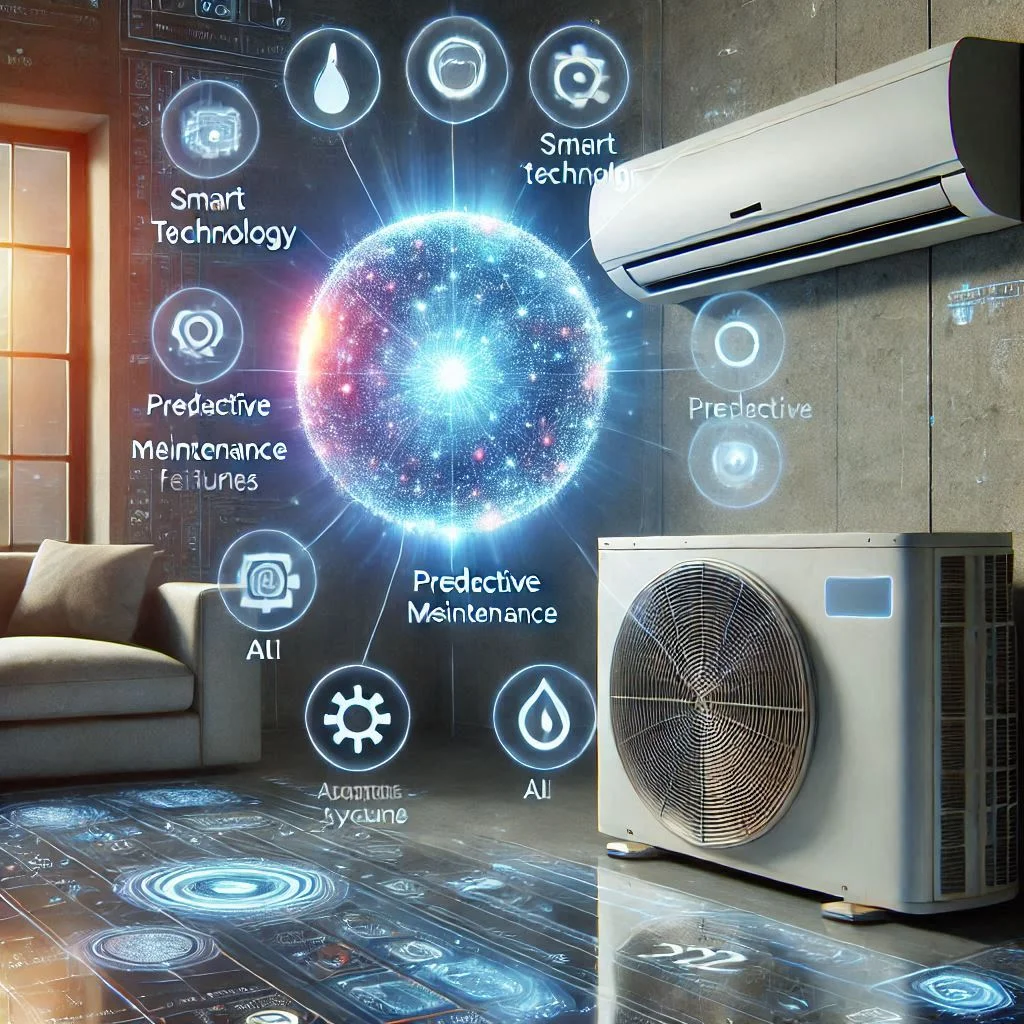
The Future of Air Conditioning in Urban Development
As cities continue to grow and urbanization intensifies, air conditioning will remain a central feature in modern infrastructure. However, future air conditioning systems will need to adapt to the demands of increasingly dense urban environments while addressing concerns such as energy consumption, urban heat islands, and sustainability.
The concept of “cool roofs” is one such innovation that is gaining traction in cities. These roofs are designed to reflect more sunlight and absorb less heat, which can help reduce the overall demand for air conditioning in buildings. In combination with air conditioning systems that use less energy, cool roofs can significantly lower the heat island effect—where urban areas become hotter than surrounding rural areas due to human activity.
In addition to cool roofs, “green buildings” and “smart cities” are emerging as solutions that integrate energy-efficient cooling systems with other sustainable technologies. These buildings feature advanced insulation, energy-efficient windows, and ventilation systems that work in conjunction with air conditioning to optimize energy use. Smart city initiatives aim to use data to create more energy-efficient, comfortable, and sustainable urban environments, where air conditioning is just one part of the larger puzzle.
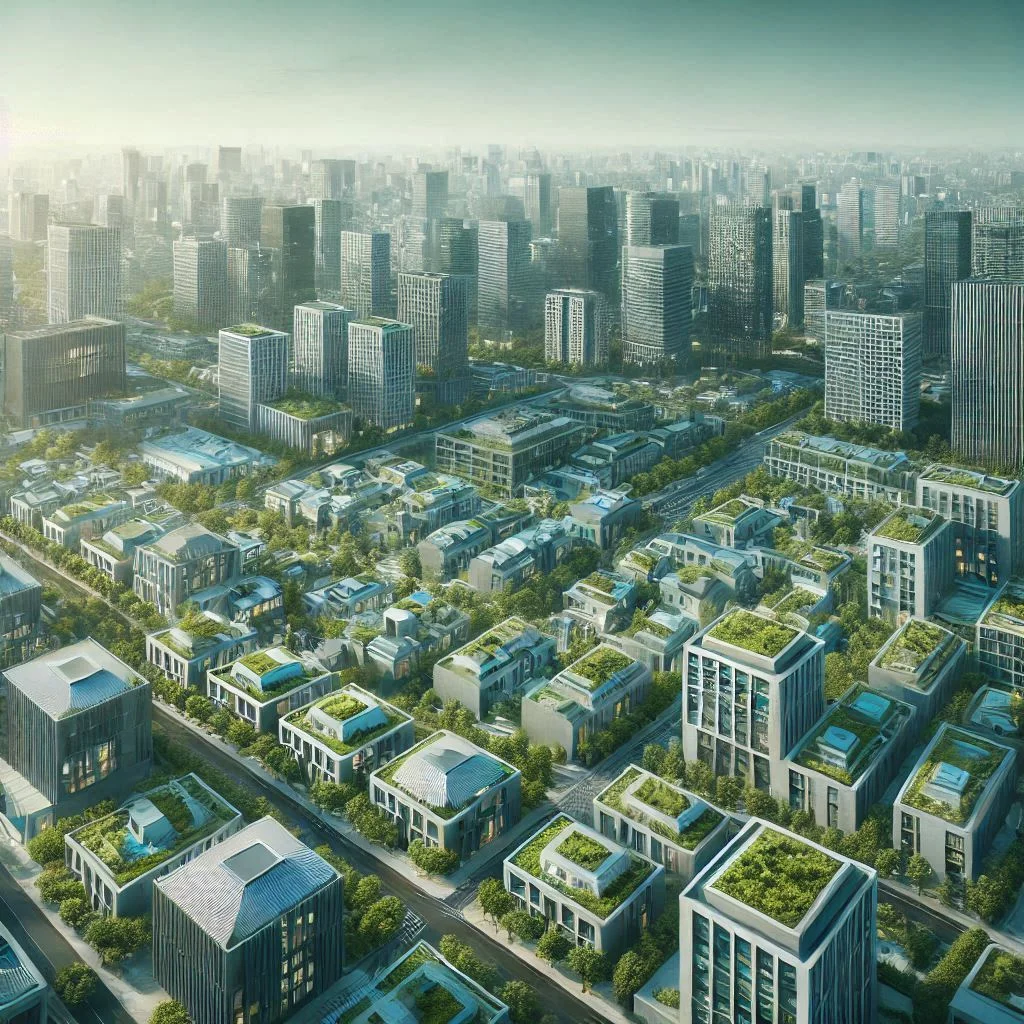
Conclusion
The evolution of air conditioning since the 1960s has been nothing short of revolutionary, transforming from a luxury into an essential part of modern life. The advancements in technology, from the introduction of smart systems and energy-efficient units to the integration of sustainable solutions like solar-powered and eco-friendly refrigerants, are reshaping the way we cool our homes, businesses, and public spaces. As we look to the future, air conditioning systems are poised to become even more intelligent, efficient, and environmentally responsible. With innovations in AI, machine learning, and smart city infrastructure, the next generation of air conditioners will not only provide greater comfort but will also contribute to a more sustainable and energy-efficient world. As air conditioning continues to evolve, it will undoubtedly remain a key driver in improving the quality of life while tackling the pressing challenges of climate change and urbanization.

